Battlefield – Super Smash Bros. Melee (GameCube, 2001)

Among the most beloved stages by competitive players, Battlefield was introduced into the series in the second game, Super Smash Bros. Melee. It couldn’t be unlocked until you’d unlocked every single character and beaten All-Star mode once.
Big Battlefield – Super Smash Bros. for Wii U (Wii U, 2014)
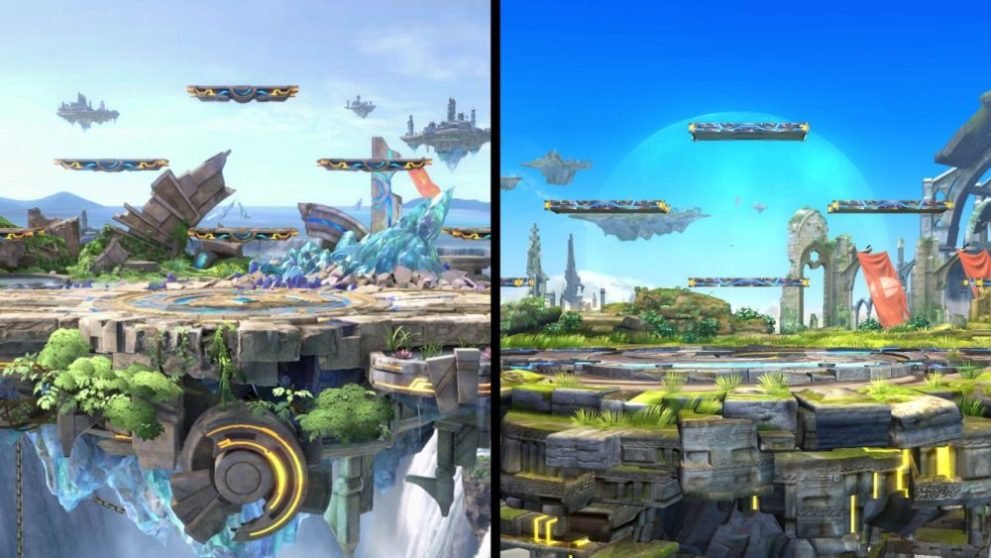
When Battlefield just wasn’t big enough anymore, Nintendo introduced Big Battlefield. This stage was made to accommodate the new 8-player mode that was brought in with Super Smash Bros. for Wii U.
Final Destination – Super Smash Bros. Melee (GameCube, 2001)
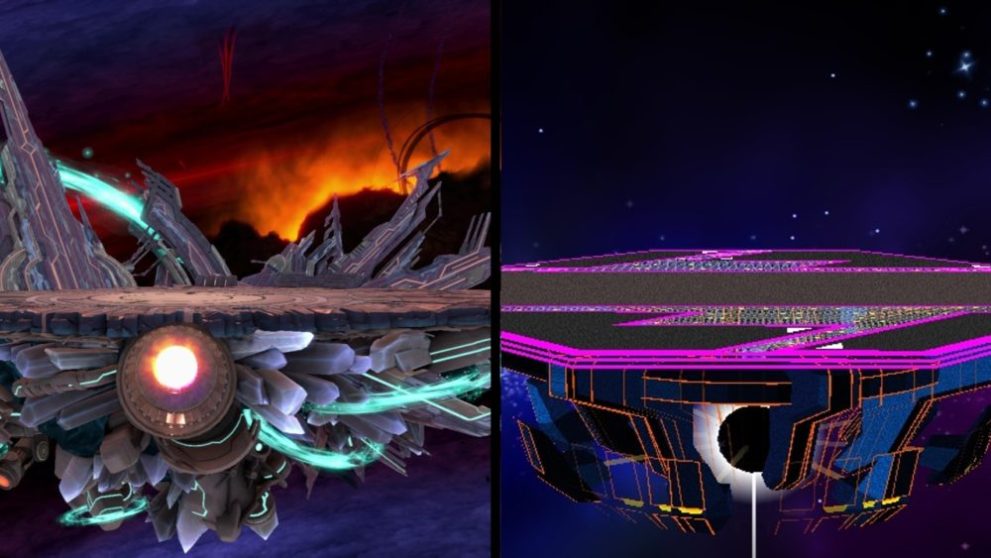
The flattest stage of them all, Final Destination. If you want a good, clean round of Smash, Final Destination is the stage for you. Its Ultimate version has been slightly jazzed up since Melee.
Peach’s Castle – Super Mario 64 (N64, 1996)
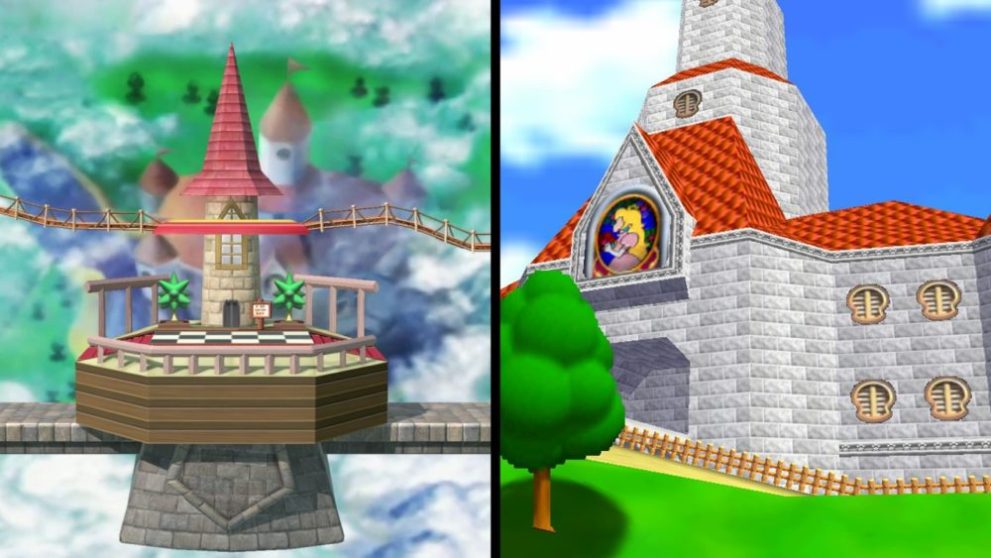
Peach’s Castle is based on the location of the same name from Super Mario 64, though they definitely took some creative liberties when designing this stage.
Kongo Jungle – Donkey Kong Country (SNES, 1994)
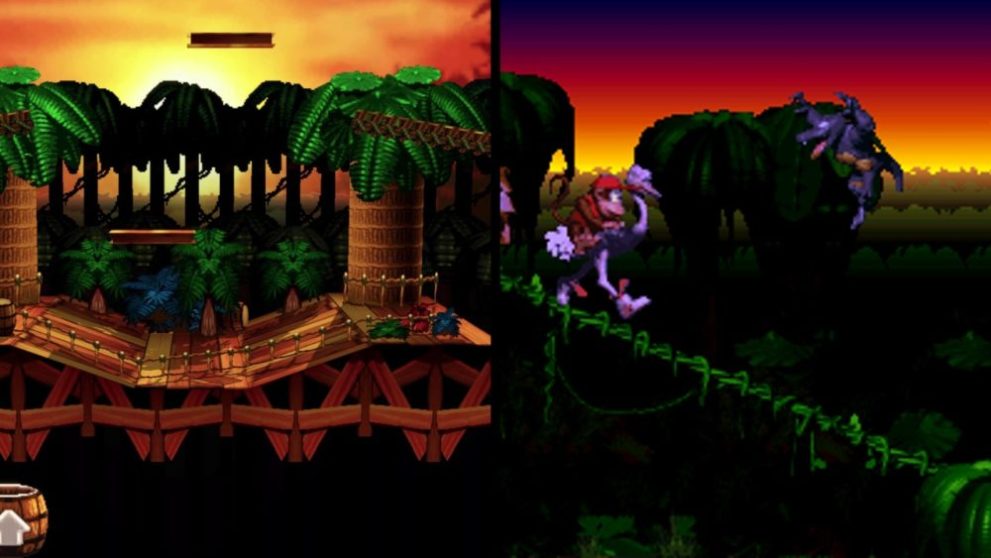
Kongo Jungle is the very first area that Donkey and Diddy have to traverse in Donkey Kong Country. The Super Smash Bros. stage borrows many elements from the jungle levels of Country, including the color scheme.
Hyrule Castle – The Legend of Zelda: Ocarina of Time (N64, 1998)

Hyrule Castle first appeared in A Link to the Past, but it’s its Ocarina of Time version that has been featured in Super Smash Bros. The polygonal nature of the N64 stage makes for some very pointy towers.
Super Happy Tree – Yoshi’s Story (N64, 1997)
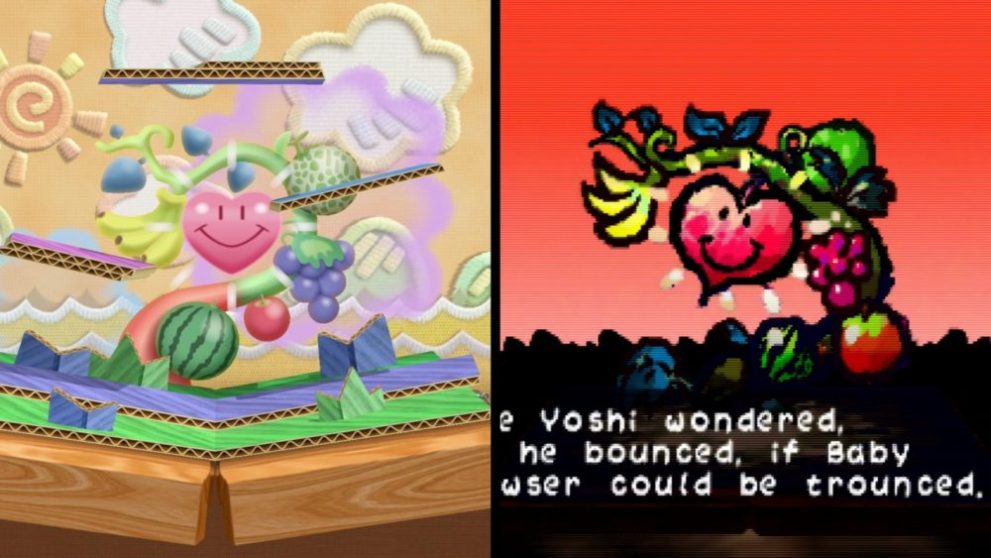
Originally known as Yoshi’s Island, Super Happy Tree is actually inspired by Yoshi’s second solo outing, Yoshi’s Story. The background elements and storybook theme are taken straight from Yoshi’s Story.
Dream Land – Kirby’s Dream Land (GB, 1992)
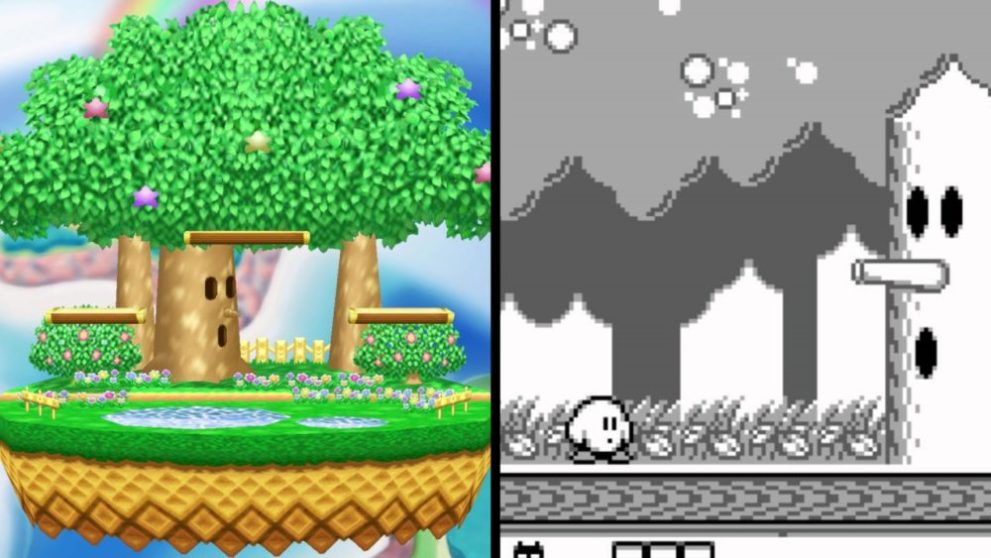
Dream Land is a country in Kirby’s home planet of Popstar. The Super Smash Bros. stage is specifically designed after Dream Land’s area of Green Greens, where Kirby takes on Whispy Woods in his first outing, Kirby’s Dream Land.
Saffron City – Pokemon Red & Green (GB, 1996)
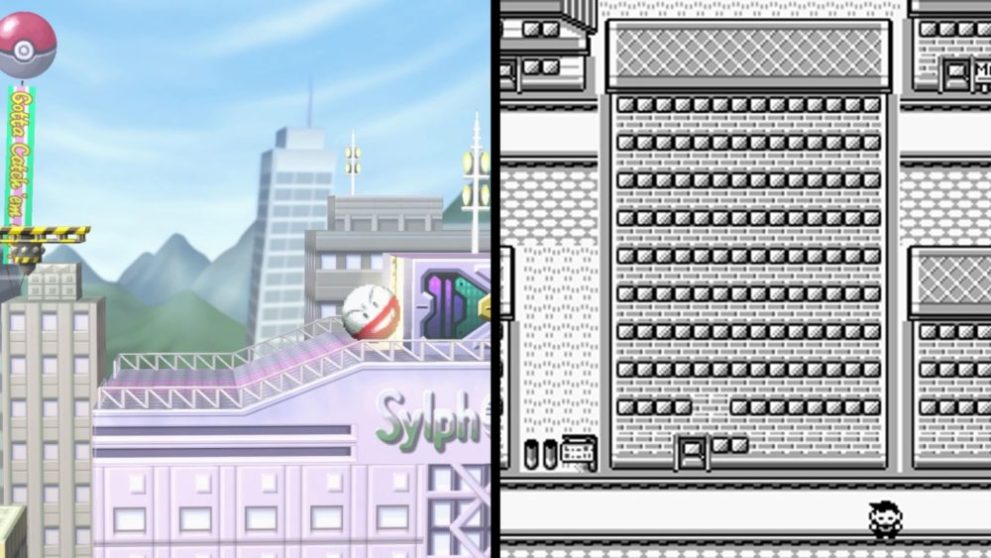
The very first Pokemon stage in the Super Smash Bros. series was based on Saffron City from Pokemon Red & Green (and Blue, Yellow, Gold, FireRed, etc.) Combatants fight above the Silph Co. building. It was here that Pokemon trainers first fought the boss of Team Rocket, Giovanni.
Mushroom Kingdom – Super Mario Bros. (NES, 1985)
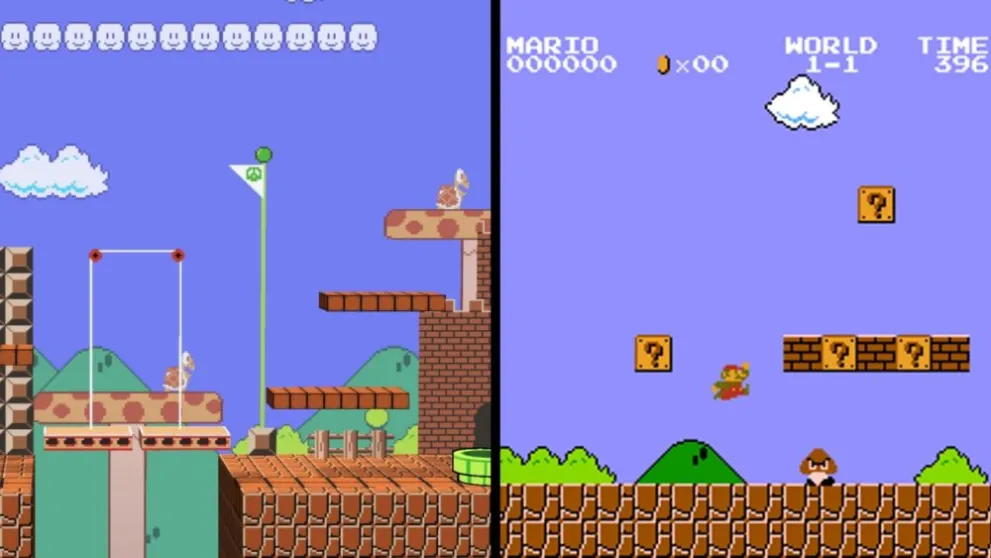
Mushroom Kingdom is based on the overworld levels in the original Super Mario Bros. and is the first retro-themed stage in the Super Smash Bros. series. It was also the first unlockable stage, requiring you to complete 1-player mode as each of the eight starting characters.
Princess Peach’s Castle – Super Mario 64 (N64, 1996)
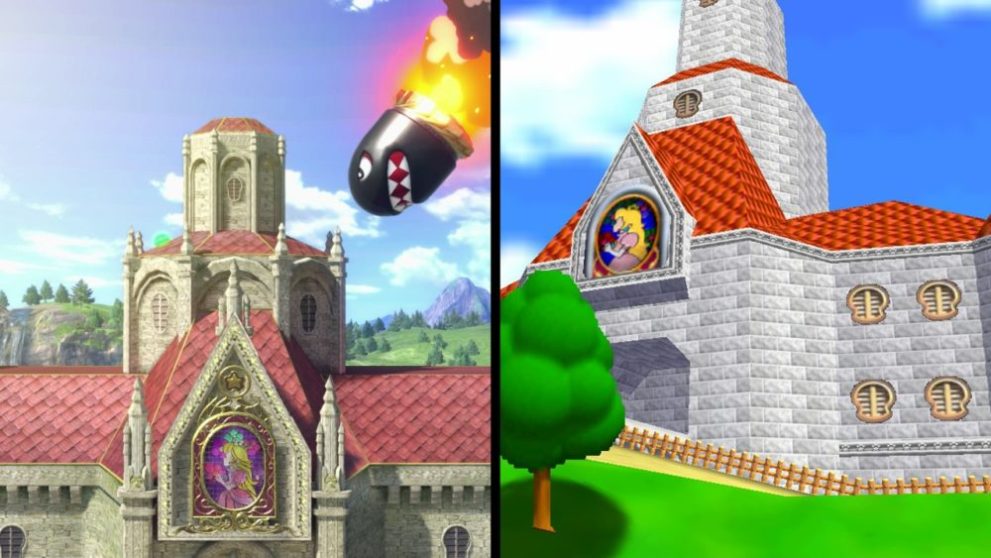
A level that looks much more like its inspiration than Peach’s Castle, Princess Peach’s Castle is also based on the hub world from Super Mario 64. I don’t remember it being attacked by a banzai bill, though.
Rainbow Cruise – Super Mario 64 (N64, 1996)
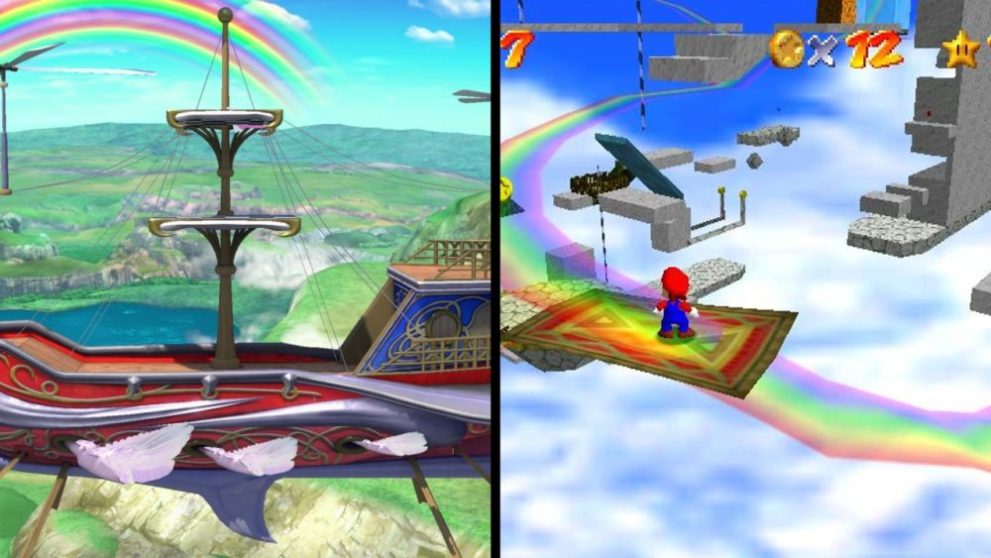
Rainbow Ride is the final level in Super Mario 64 —and is most certainly the hardest. It’s difficulty was retained in Super Smash Bros., as the lack of a solid floor throughout most of the moving stage leaves ample opportunity for players to fall to their doom.
Kongo Falls – Donkey Kong Country (SNES, 1994)
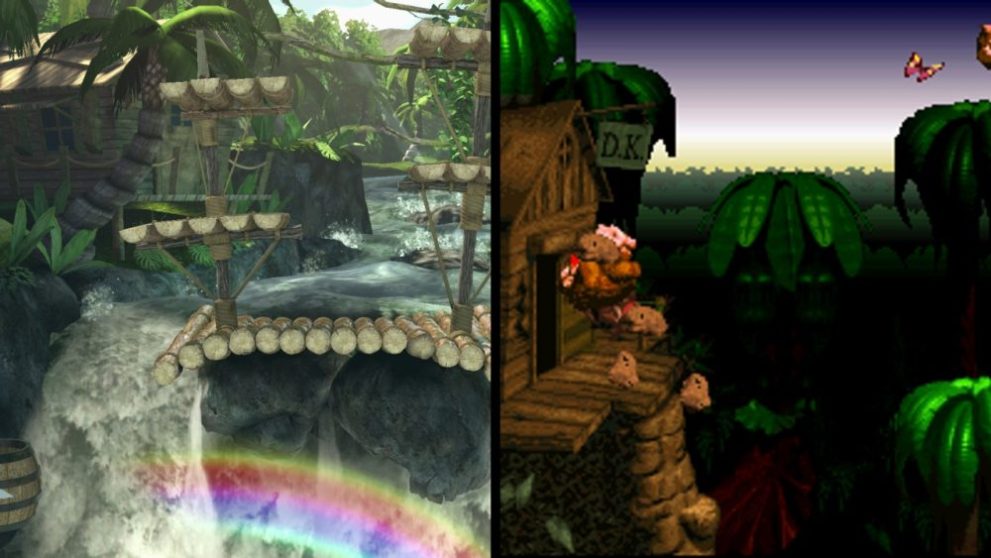
Kongo Falls is very loosely based on Donkey Kong Country. Although there is no rushing waterfalls at the beginning of that game, we can tell that this stage takes place in or near Kongo Jungle because Donkey Kong’s treehouse is in the background.
Jungle Japes – Donkey Kong Country (SNES, 1994)
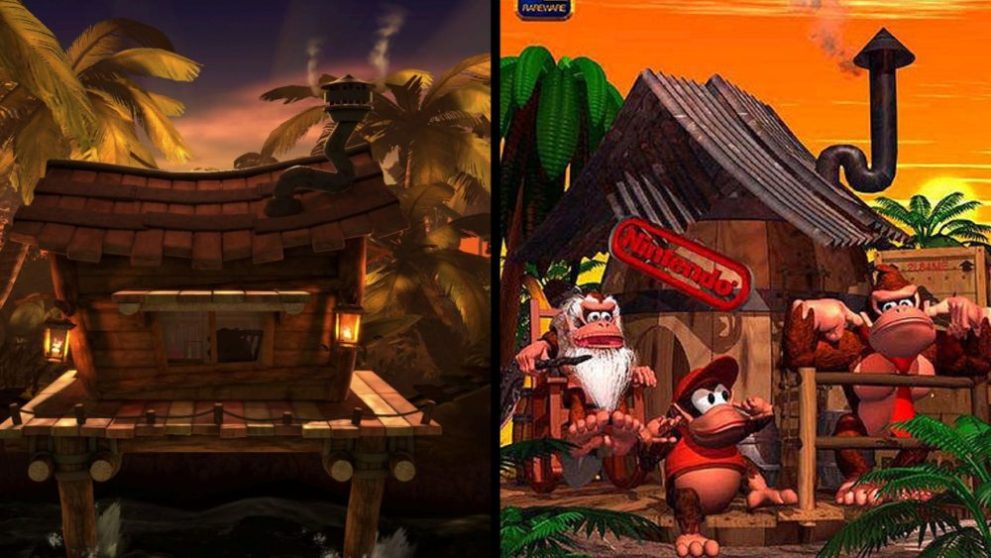
Although this stage is named after the starting area in Donkey Kong 64, a majority of its elements and its aesthetic are taken from Donkey Kong Country. This includes Cranky’s Cabin, and sometimes you can even catch a cameo appearance from Cranky Kong himself.
Great Bay – The Legend of Zelda: Majora’s Mask (N64, 2000)
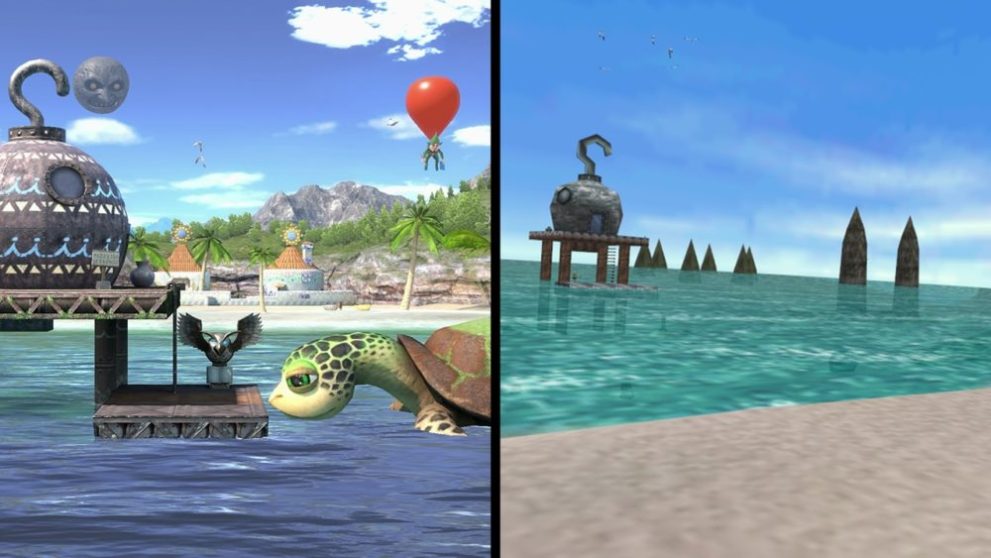
Great Bay is a location in The Legend of Zelda: Majora’s Mask. Its Super Smash Bros. counterpart takes place on the coast of Great Bay. In Majora’s Mask, this is where Link acquires the Zora mask from Mikau the guitarist.
Temple – Zelda II: The Adventure of Link (NES, 1987)
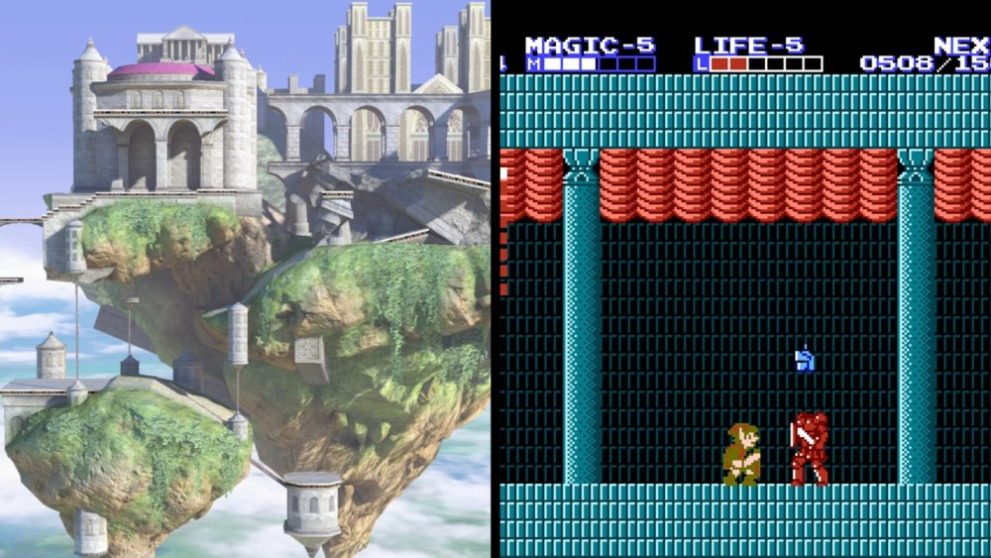
This big stage is loosely based on Zelda II: The Adventure of Link and that game’s palaces. In that game, Link traversed the palaces from a 2D side-on perspective similar to Super Smash Bros.
Brinstar – Metroid (NES, 1986)
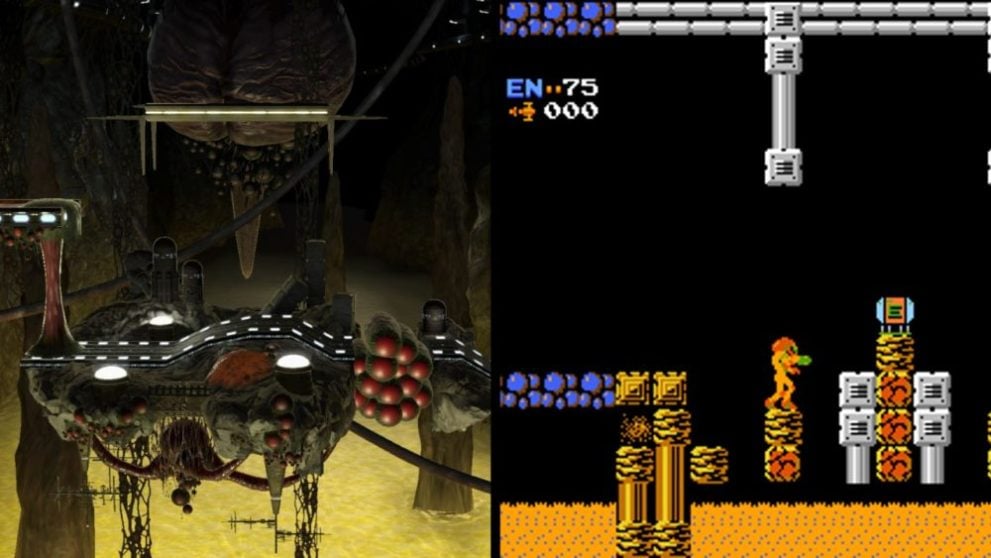
Brinstar was an area in the original Metroid and Super Metroid, but the only real connection that the Super Smash Bros. stage shares is the acid pits. The stage, which originated in Melee, feels more like it’s based on the Planet Zebes stage from the original Super Smash Bros.
Yoshi’s Island (Melee) – Super Mario World (SNES, 1990)
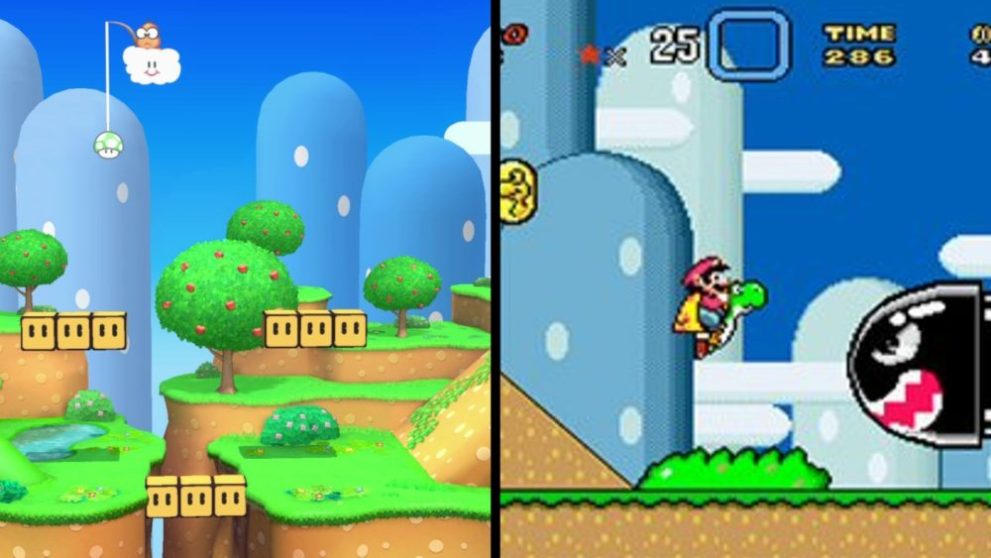
Despite being a Yoshi stage, it actually hails from a game where you play as Mario. The first few levels in Super Mario World were called Yoshi’s Island and is what this stage is based on.
Yoshi’s Story – Yoshi’s Story (N64, 1997)
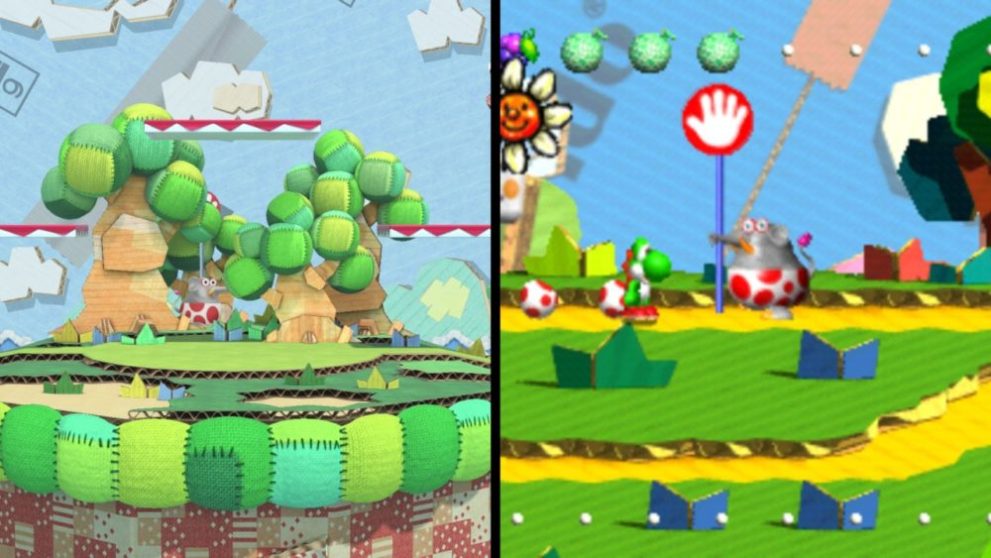
Obviously, Yoshi’s Story is based on the game of the same name. This stage borrows assets from the opening three levels of Yoshi’s Story.
Fountain of Dreams – Kirby’s Adventure (NES, 1993)
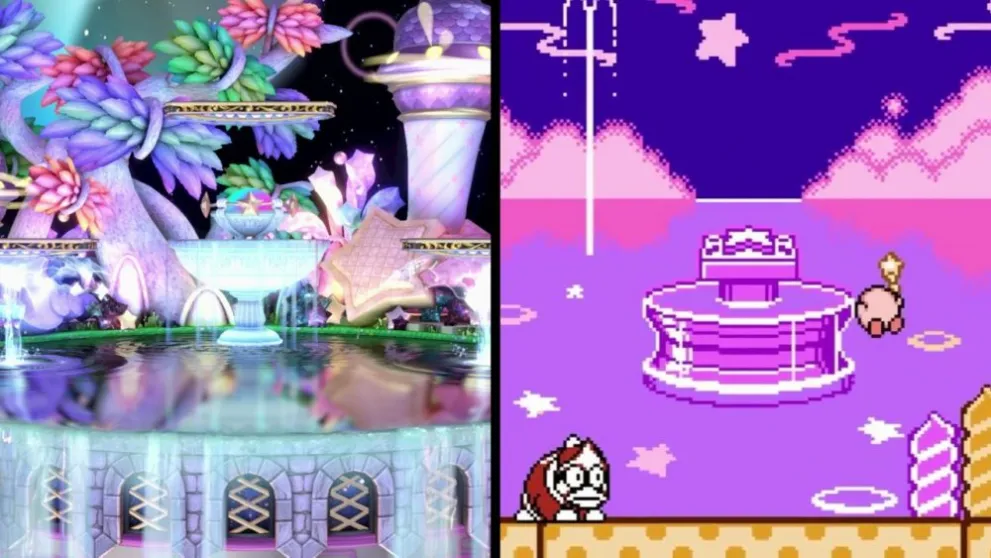
The Fountain of Dreams is what allows the inhabitants of Popstar to have good dreams. In Kirby’s Adventure, this is where Kirby took on King Dedede to retrieve the final piece of the Star Rod.
Green Greens – Kirby’s Dream Land (GB, 1992)
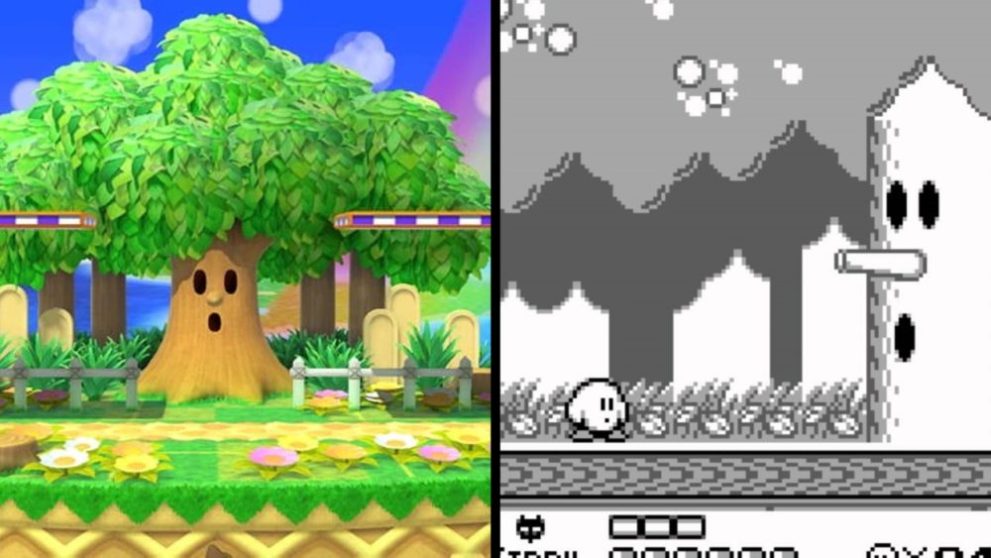
Green Greens is the second Super Smash Bros. stage based on the location from Kirby’s Dream Land. The wooden menace Whispy Woods makes a return once again.
Corneria – Star Fox 64 (N64, 1997)
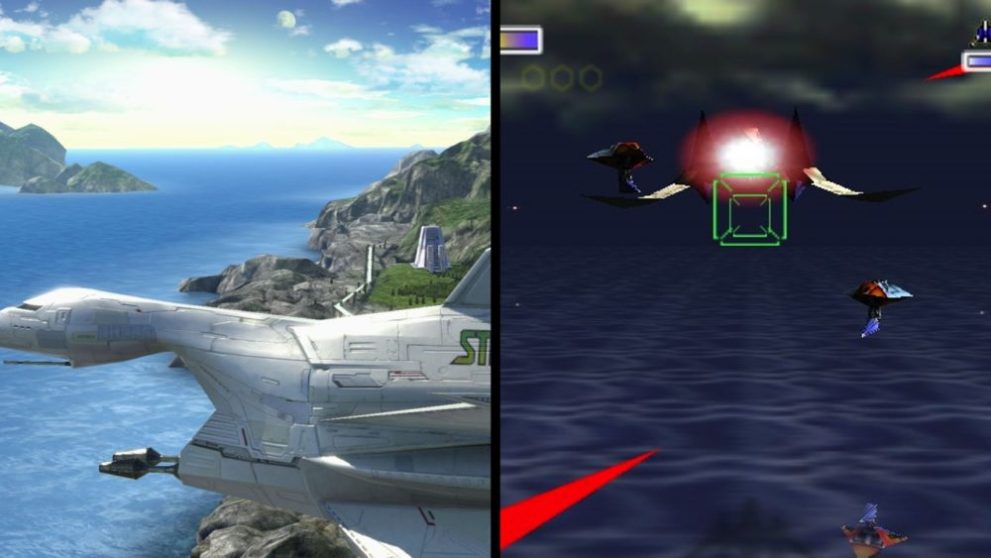
Corneria first made its appearance in Star Fox for the SNES, albeit with texture-less polygons for buildings making it hard to determine what anything actually was. The Corneria from Super Smash Bros. resembles the level from Star Fox 64 much closer. Both the stage and the Star Fox 64 level take place in Corneria City as Star Fox face off against Andross’ army.
Venom – Star Fox 64 (N64, 1997)
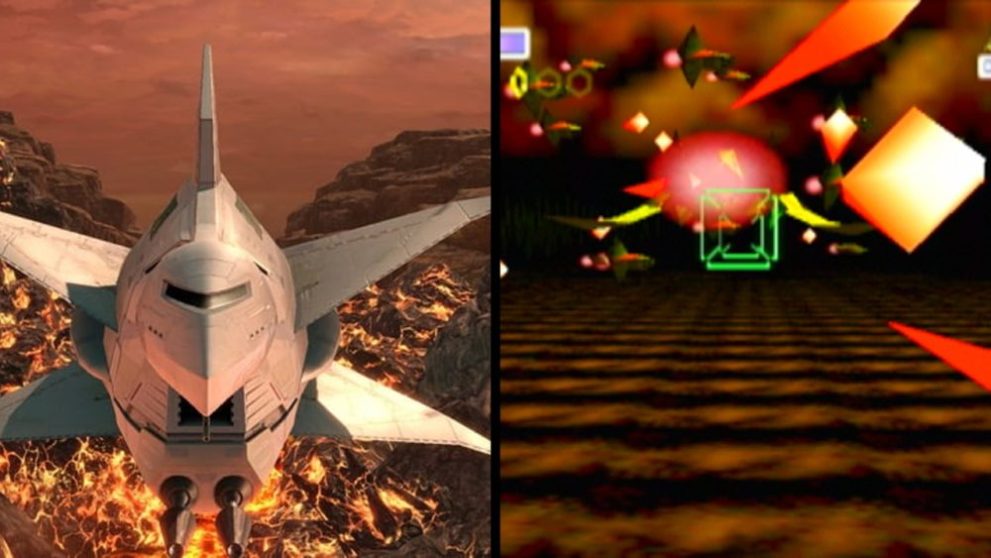
Similarly, Venom is based on its Star Fox 64 iteration rather than the original Star Fox’s. In Star Fox 64, this is where Fox finally faced off against Andross but not before a quick scuffle with Star Wolf.
Pokemon Stadium – Pocket Monsters Stadium (N64, 1998)
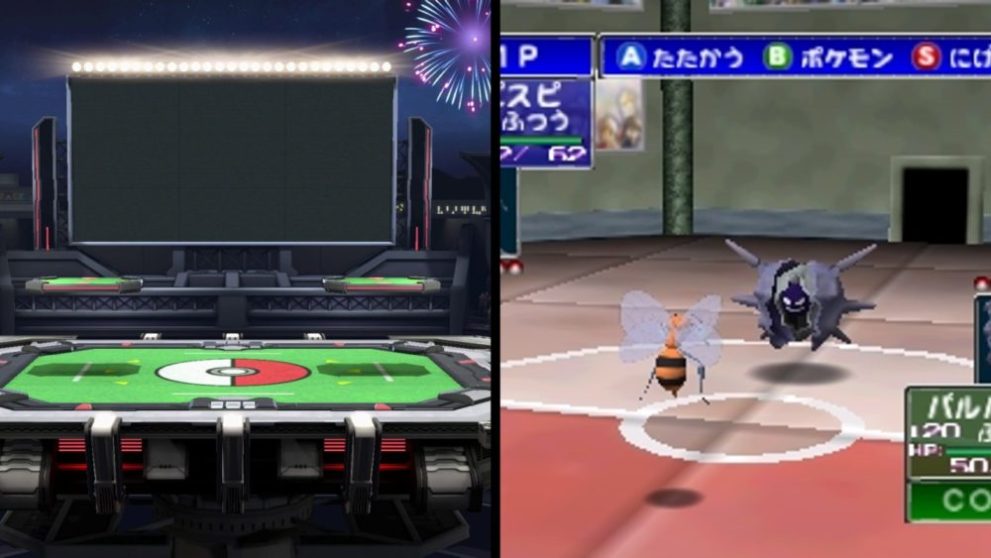
The Pokemon Stadium stage isn’t necessarily based on anything from the Pokemon series, but the only Pokemon stadiums that appear in the games are from the Pokemon Stadium series, starting with Pocket Monsters Stadium. The original Japan-exclusive Pocket Monsters Stadium is similar to the version that we got, but it has a few key differences. For instance, you choose from 42 Pokemon as opposed to the full 150.
Onett – EarthBound (SNES, 1994)
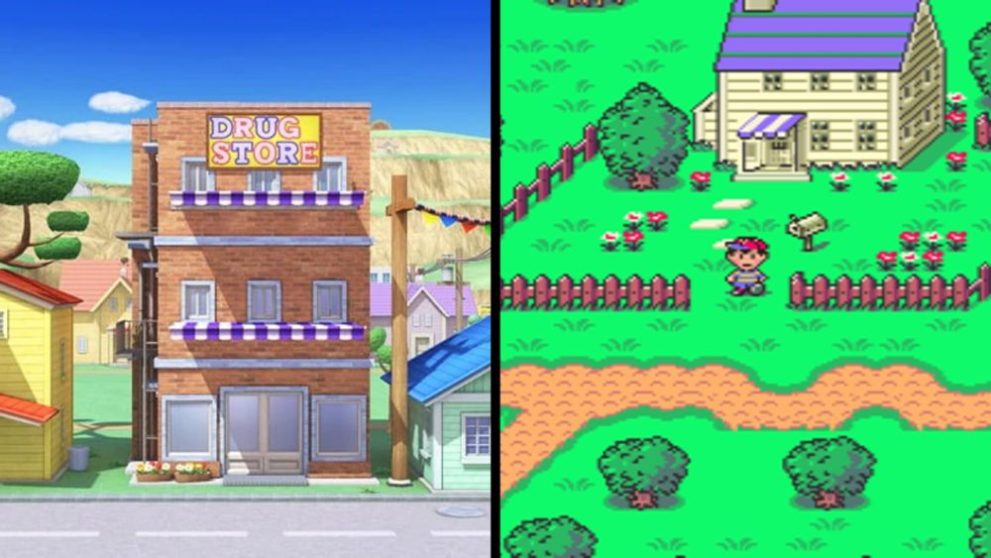
Onett is the very first area from the quirky JRPG EarthBound and Ness’s hometown. In the background of the Super Smash Bros. stage, you can see the meteorite that begins the plot of EarthBound.
Mushroom Kingdom II – Yume Kojo: Doki Doki Panic (Famicom Disk System, 1987)

If you want to get really technical, Mushroom Kingdom II didn’t originate in a Mario game nor is it actually the Mushroom Kingdom at all. The land featured in Super Mario Bros. 2 (the one that Mushroom Kingdom II is based on) was called Subcon, and that is the same land that appeared in the game that Super Mario Bros. 2 was ripped from, Yume Kojo: Doki Doki Panic.
Brinstar Depths – Super Metroid (SNES, 1994)
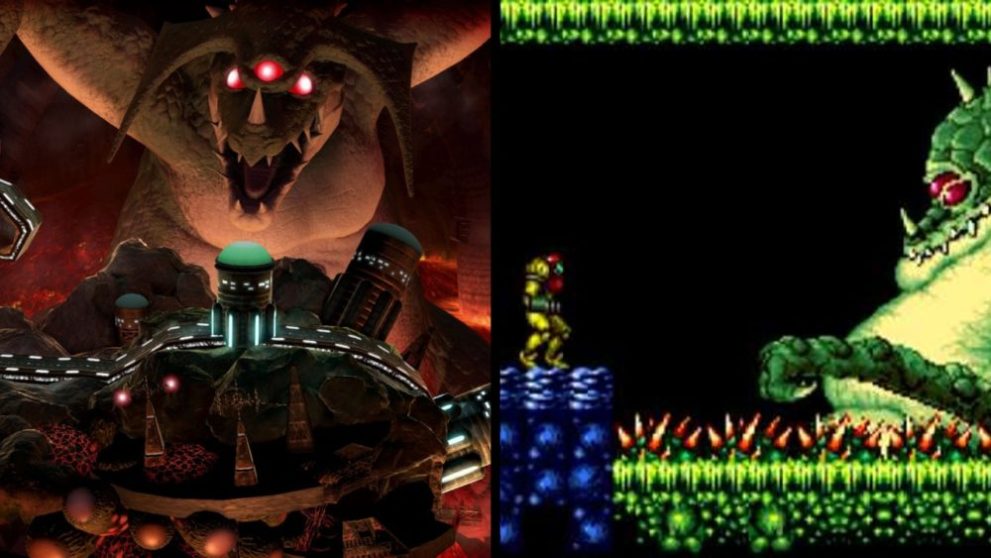
There isn’t actually an area in Super Metroid known as Brinstar Depths, and it could be argued that this stage is based on the Brinstar from the original Metroid, but there are a few pieces of evidence that point to it being based on the SNES game. Firstly, the stage features a giant version of Kraid similarly to Super Metroid. Secondly, there is a track on the Super Metroid OST called “Brinstar Underground Depths” which the original Metroid lacks.
Big Blue – F-Zero X (N64, 1998)
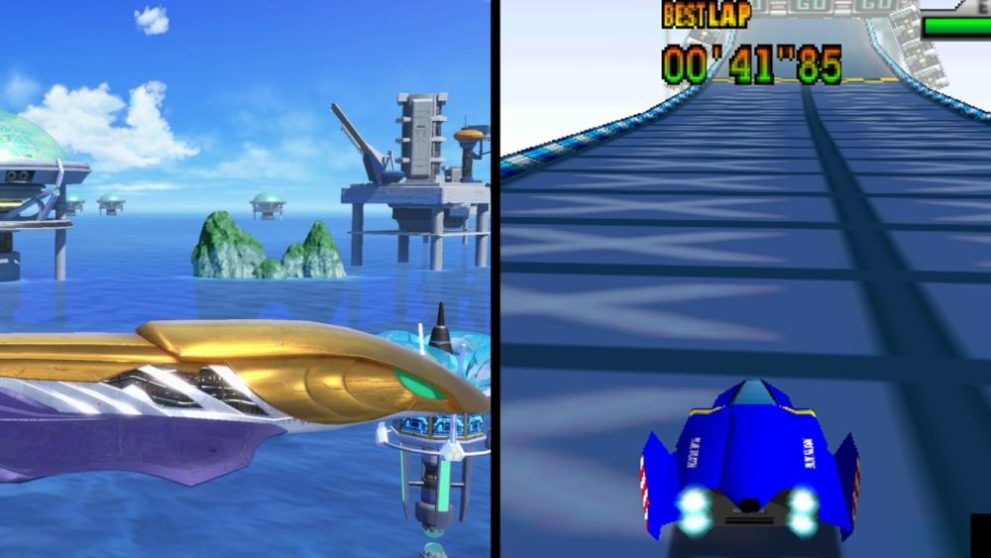
The visual style and layout of Super Smash Bros.’ Big Blue is more akin to the Big Blue from F-Zero X than the original F-Zero. In F-Zero X, different versions of Big Blue are featured in the Jack Cup and the Queen Cup.
Fourside – EarthBound (SNES, 1994)

Fourside is the fourth town that Ness and friends visit in EarthBound. The Fourside stage from Super Smash Bros. more closely resembles the parallel version of Fourside known as Moonside.
Delfino Plaza – Super Mario Sunshine (GameCube, 2002)
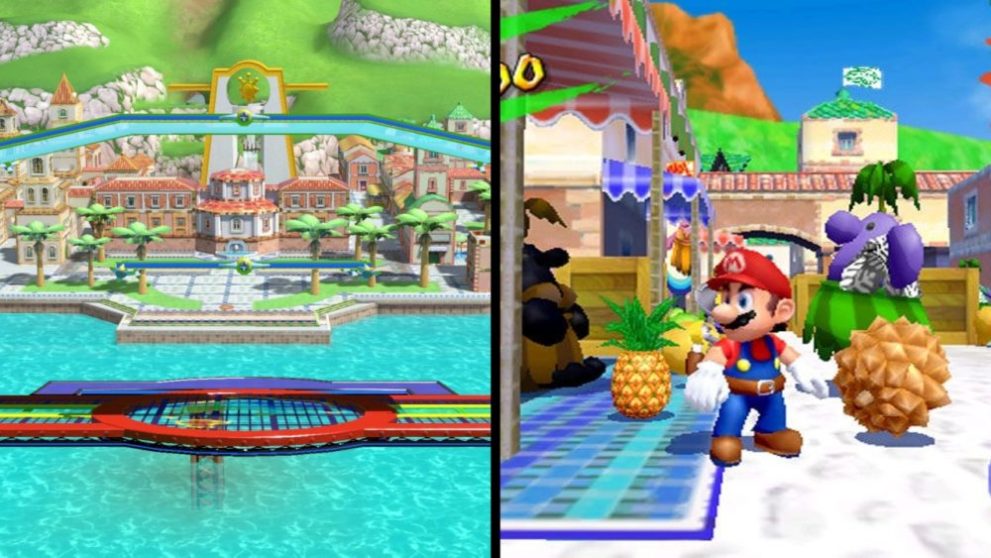
Just like we got stages based on the hub world from Super Mario 64, we also got a stage based on the hub world from Super Mario Sunshine. In that game, Delfino Island was supposed to be Mario’s vacation destination, but he ended up having to clear the place of graffiti and restore its shine sprites instead.
Mushroomy Kingdom – Super Mario Bros. (NES, 1985)
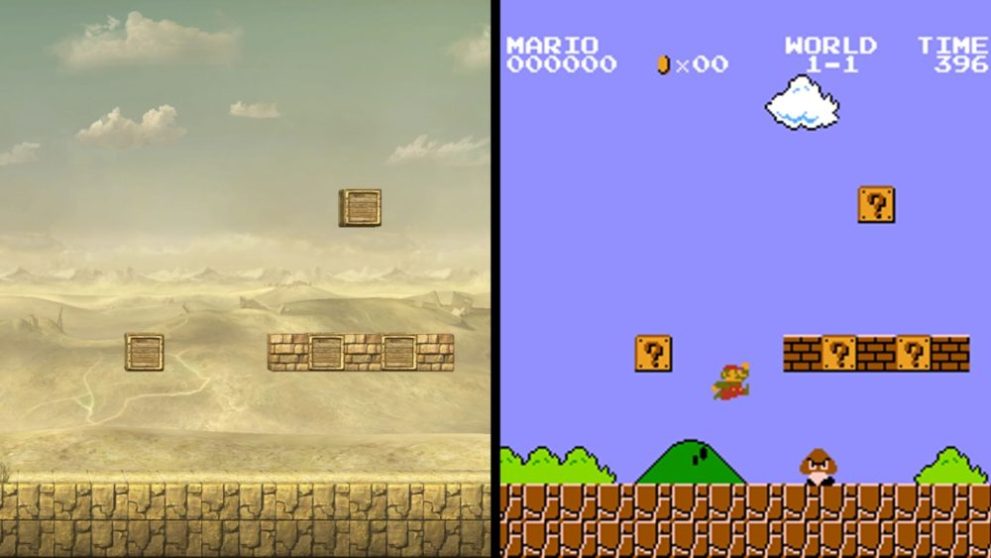
There are two different versions of Mushroomy Kingdom: one is a recreation of Super Mario Bros.’ 1-1, while the other is a recreation of 1-2. The Smash Bros. Dojo says, “The kingdom you once knew has turned to ruins over the long years.”
Figure-8 Circuit – Mario Kart DS (DS, 2005)
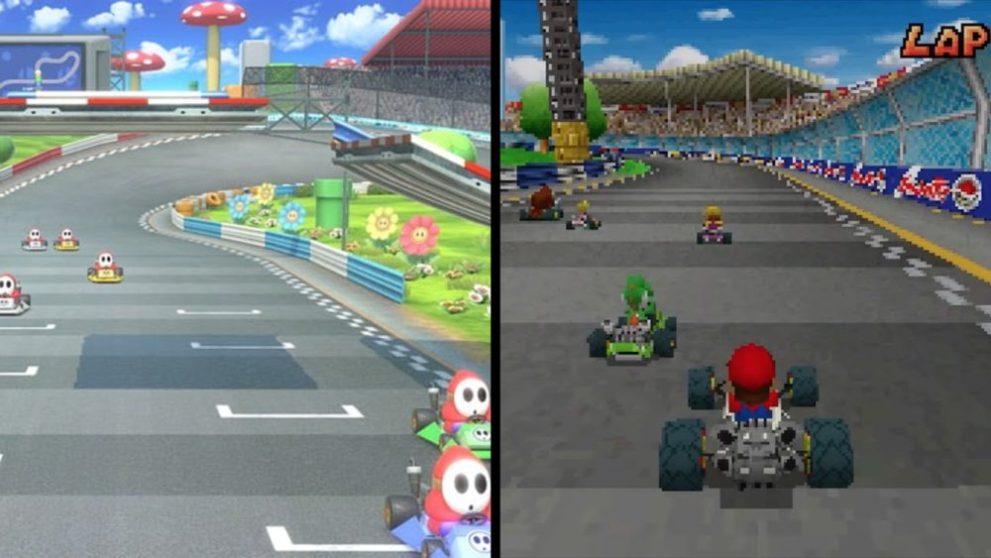
Originally known as Mario Circuit, Super Smash Bros. Ultimate has changed the name to fit that of its inspiration: Mario Kart DS’ Figure-8 Circuit. This was the first and plainest track in Mario Kart DS’ Mushroom Cup.
WarioWare, Inc. – WarioWare, Inc.: Mega Microgame$! (GBA, 2003)
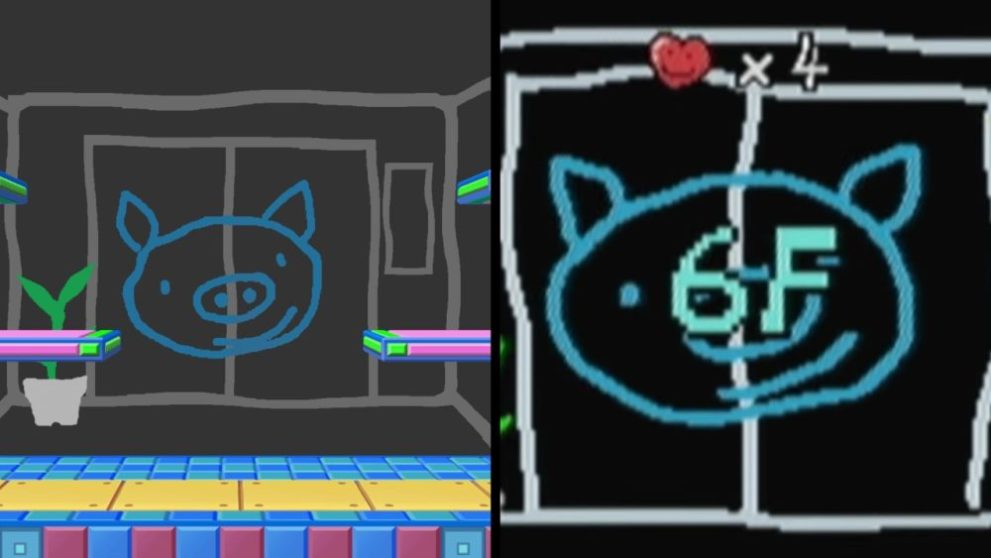
While some of the WarioWare, Inc. microgames come from WarioWare Touched! and some are newly created for Super Smash Bros., the stage itself and its background are based on the Variety Tower from WarioWare, Inc.: Mega Microgame$!
Bridge of Eldin – The Legend of Zelda: Twilight Princess (GameCube & Wii, 2006)
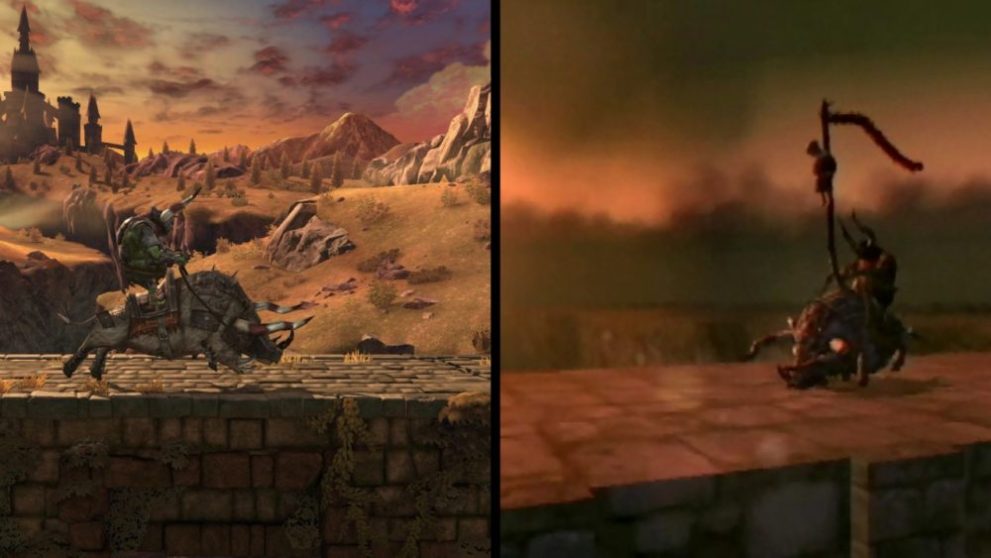
The Bridge of Eldin was the setting of the showdown between Link and King Bulblin in The Legend of Zelda: Twilight Princess. King Bulblin and his goons return to wreak havoc on the Super Smash Bros. stage.
Norfair – Super Metroid (SNES, 1994)
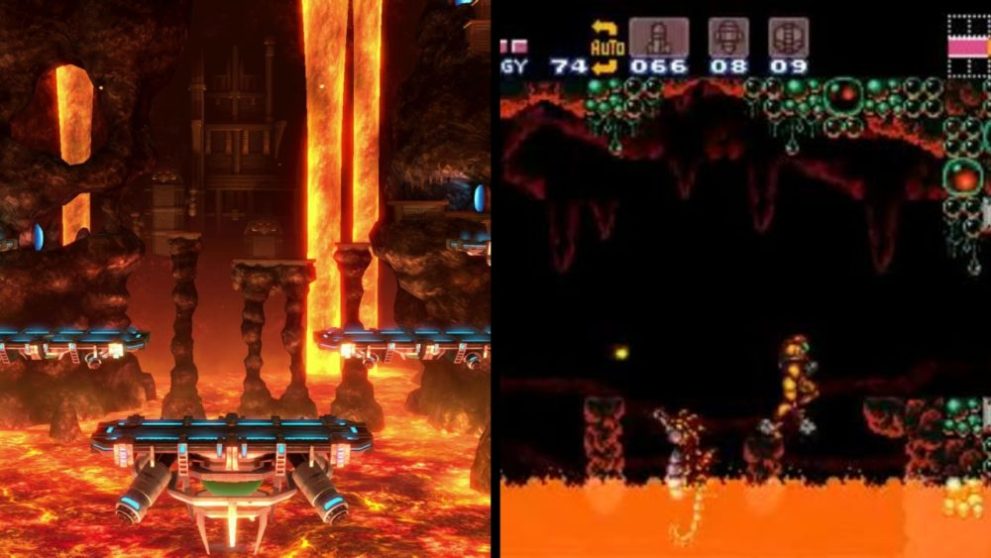
This lava-filled subterranean region appeared in the first Metroid, but the heat was turned up in Super Metroid, which is the version that the Super Smash Bros. Stage is based on. This is where Samus finally gets the chance to teach her archnemesis Ridley a lesson.
Frigate Orpheon – Metroid Prime (GameCube, 2002)
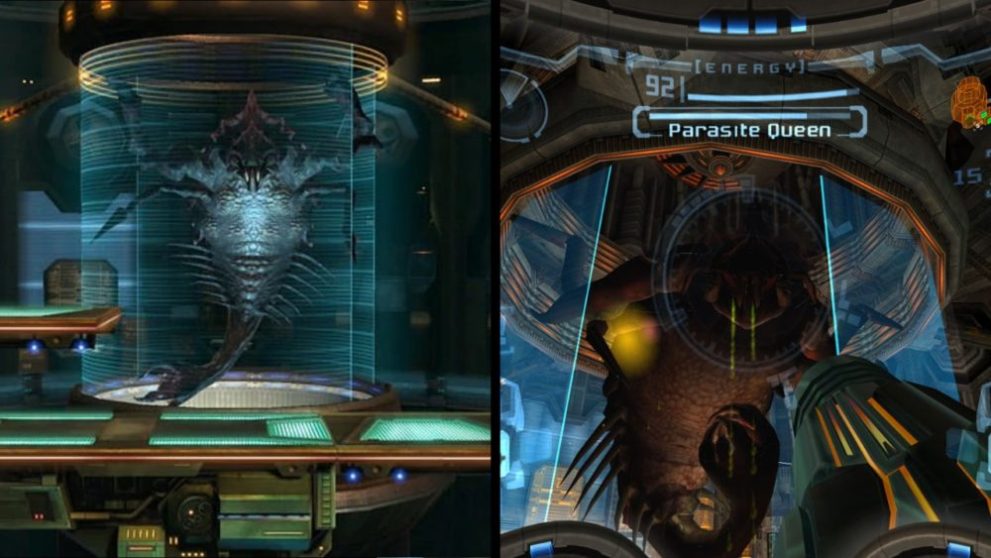
Frigate Orpheon is the very first place that Metroid fans got to explore in 3D when Metroid Prime released in 2002. One of the first things that Samus did was take on the Parasite Queen.
Yoshi’s Island – Super Mario World 2: Yoshi’s Island (SNES, 1995)
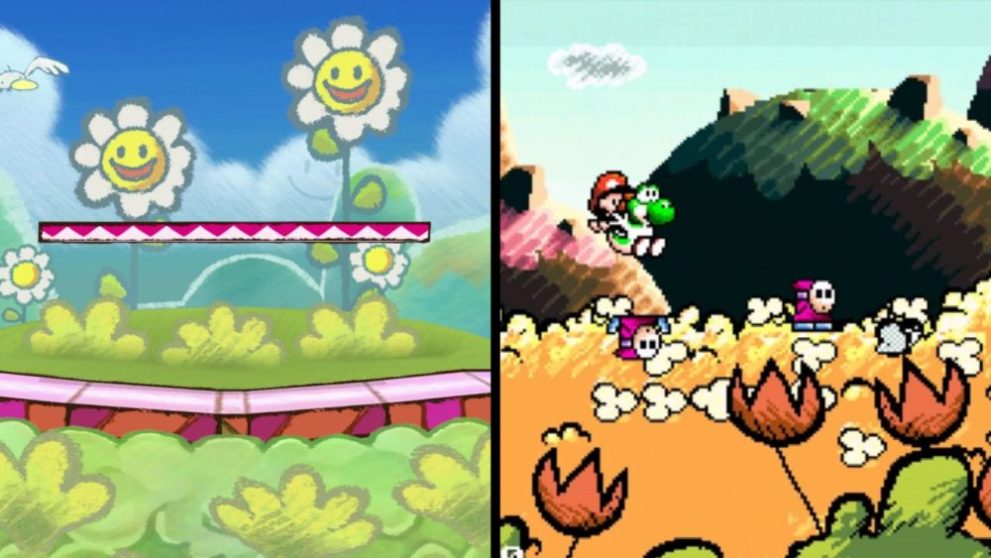
Finally, a Yoshi’s Island stage that is actually based on the game Yoshi’s Island! The Smash Bros. stage reflects the game’s unique art style and features staple Yoshi enemies, such as Shy Guys and Blarggwiches.
Halberd – Kirby Super Star (SNES, 1996)
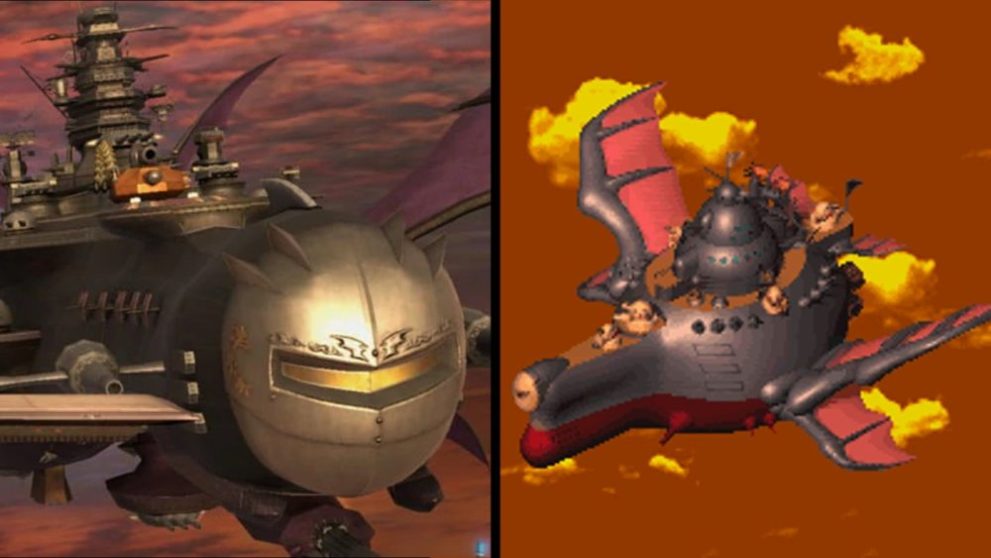
The main setting of Kirby Super Star’s Revenge of Meta Knight mode. In this mode, the anti-hero is actually trying to take over Dream Land, and it’s Kirby’s job to stop him.
Lylat Cruise – Star Fox: Assault (GameCube, 2005)
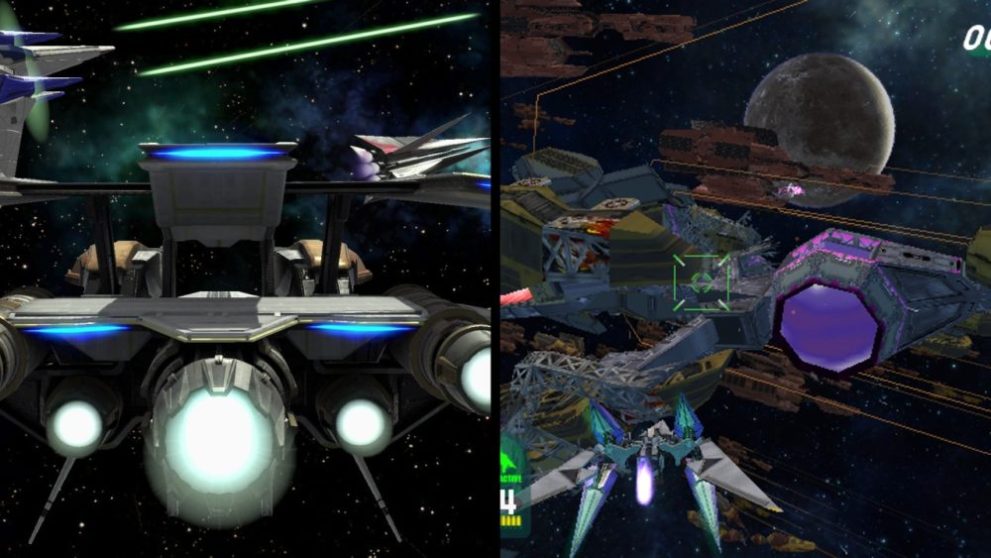
The Lylat Cruise stage takes place during several different battle scenes from Star Fox: Assault. It begins similarly to the game its based on with the Corneria Defense Force duking it out with Andross’ army.
Pokemon Stadium 2 – Pocket Monsters Stadium (N64, 1998)
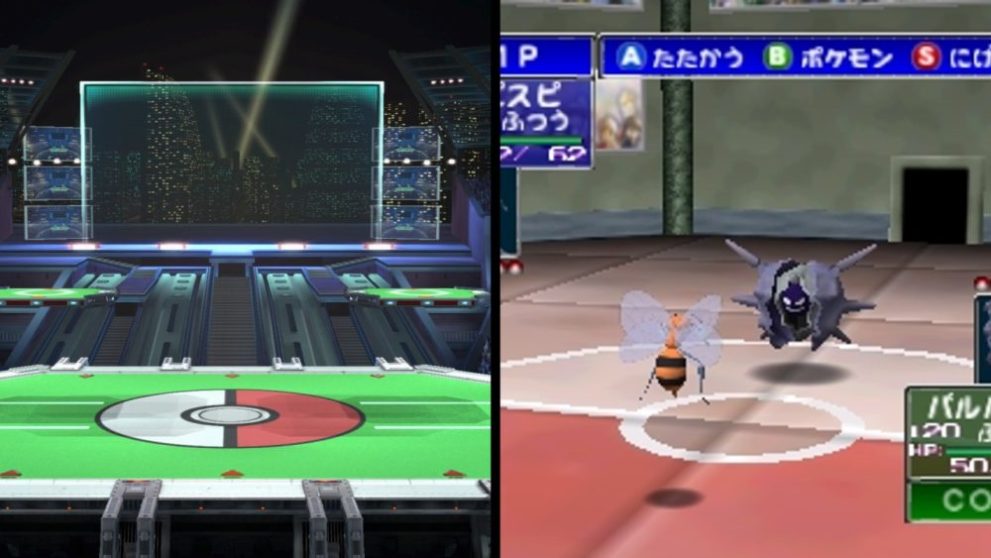
Similarly to the first Pokemon Stadium, Pokemon Stadium 2 borrows the general concept of Pokemon stadiums from the Pokemon Stadium series. This time, it features Pokemon from generations I-IV in the background and cycles between electric, flying, ground, and ice versions of the stage.
Port Town Aero Dive – F-Zero GX (GameCube, 2003)
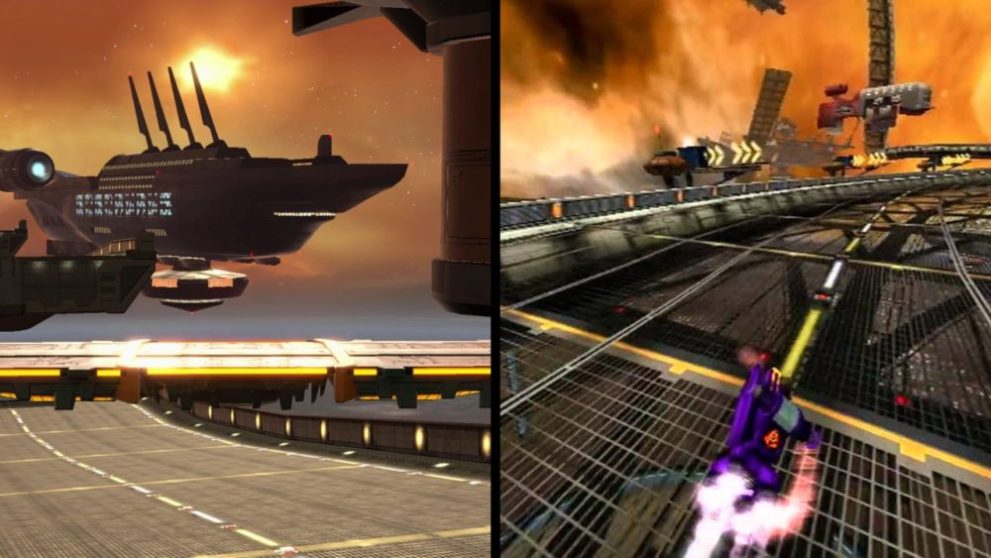
Port Town Aero Dive was a completely new race track featured in F-Zero GX. It is the second race of F-Zero GX’s Sapphire Cup. If you look in the background in both versions, you can see a giant statue of R.O.B.
Castle Siege – Fire Emblem: Shadow Dragon and the Blade of Light (Famicom, 1990)
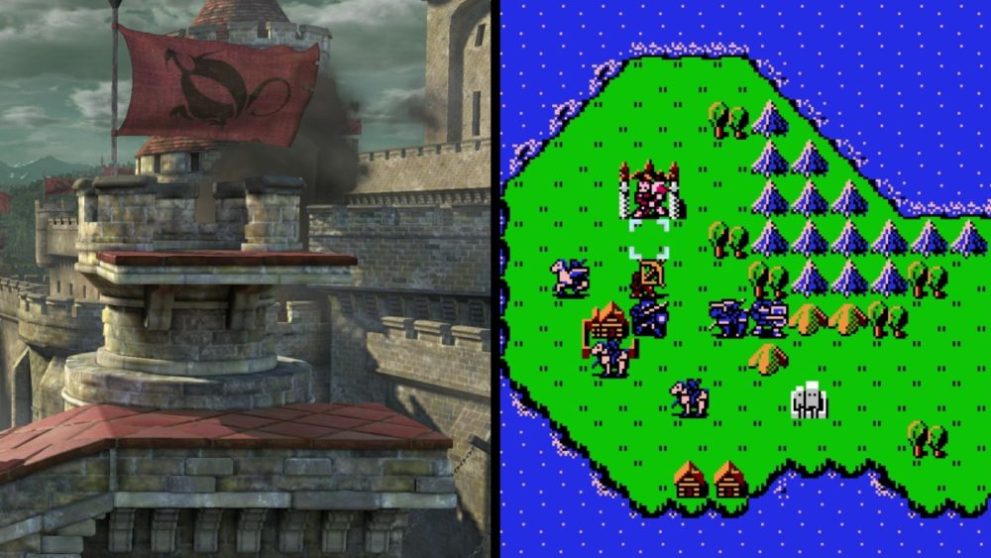
Castle Siege isn’t based on a specific location from Fire Emblem but embodies the motif of sieging castles that is in pretty much every Fire Emblem game starting with the first game, Fire Emblem: Shadow Dragon and the Blade of Light.
Distant Planet – Pikmin (GameCube, 2001)
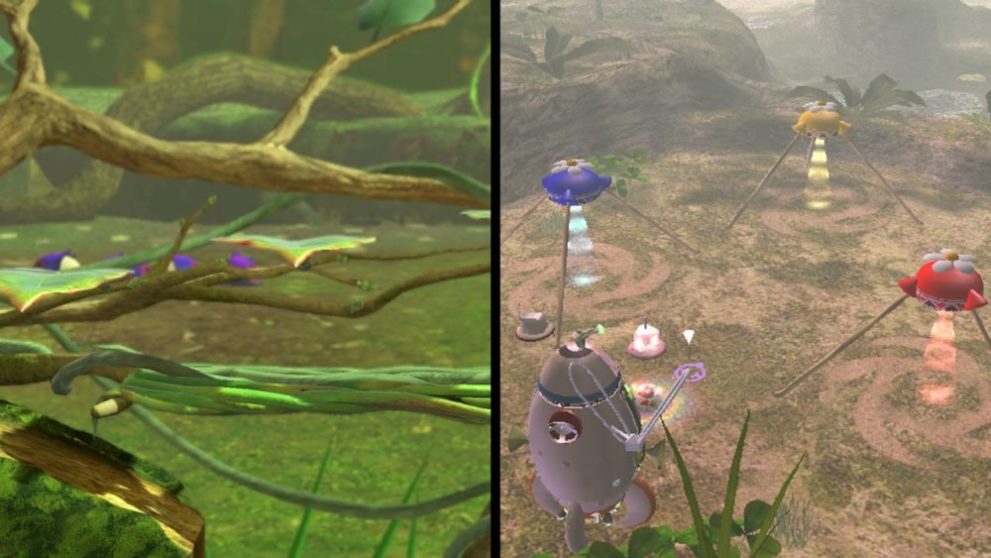
At the time of Super Smash Bros. Brawl’s release, the planet where Pikmin 1 and 2 were set didn’t have a name, so the stage was simply called Distant Planet. It wasn’t until 2013’s Pikmin 3 that the Koppai explorers dubbed it PNF-404.
Smashville – Animal Crossing: Wild World (DS, 2005)

Smashville could have been the name of a town from any Animal Crossing game, but the stage is definitely based on Wild World as it contains several building designs that were exclusive to that game at the time, including the Town Hall.
New Pork City – Mother 3 (GBA, 2006)
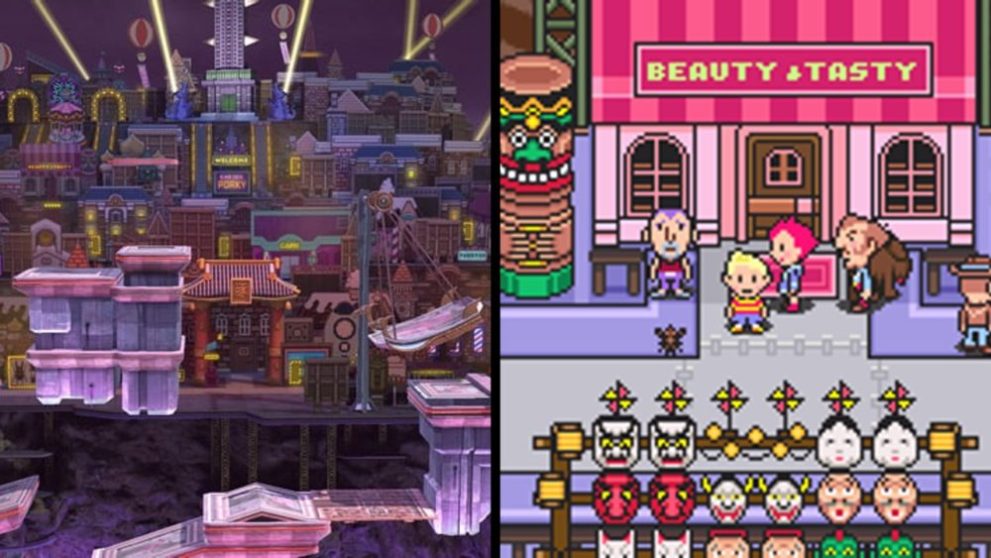
New Pork City is one of the final locations in Mother 3. Since the game hasn’t been officially localized and most Westerners probably haven’t played it, I won’t say anything more to avoid spoilers for you and me.
Summit – Ice Climber (NES, 1985)
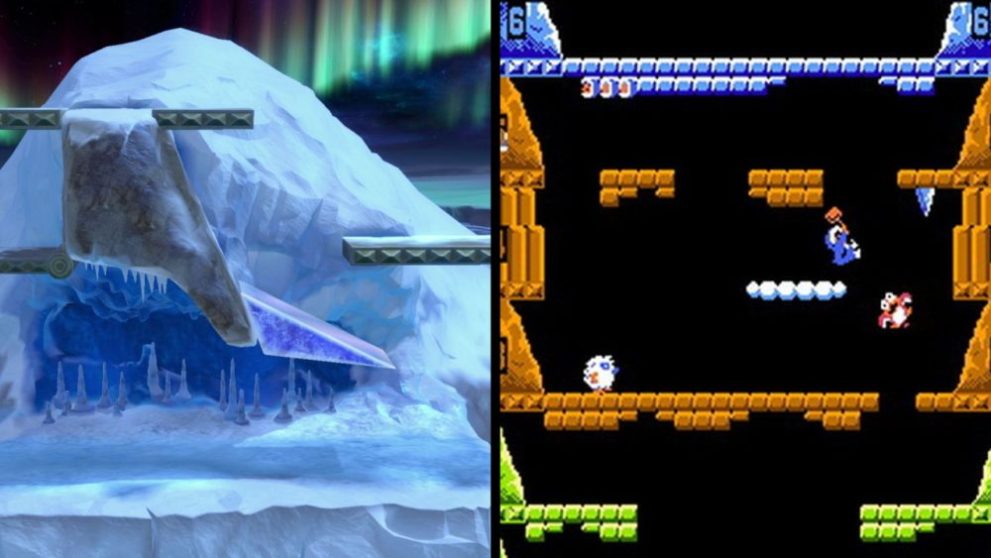
The stage itself isn’t particularly based on anything from Ice Climber, but it does incorporate a lot of elements from that game, such as the platform design, polar bear enemies and vegetables. The giant fish hazard actually comes from Balloon Fight, not Ice Climber.
Skyworld – Kid Icarus (NES, 1986)
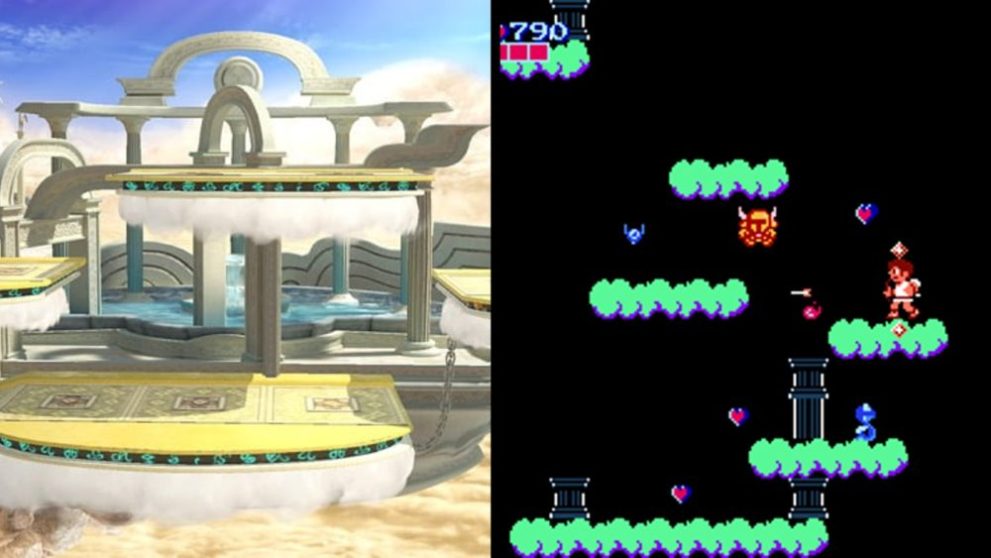
In Kid Icarus, Pit progresses through the Underworld and Overworld to get to the Skyworld. Most of the visual elements of Skyworld, much like Pit himself, have been completely redesigned for Super Smash Bros.
Shadow Moses Island – Metal Gear Solid (PlayStation, 1998)
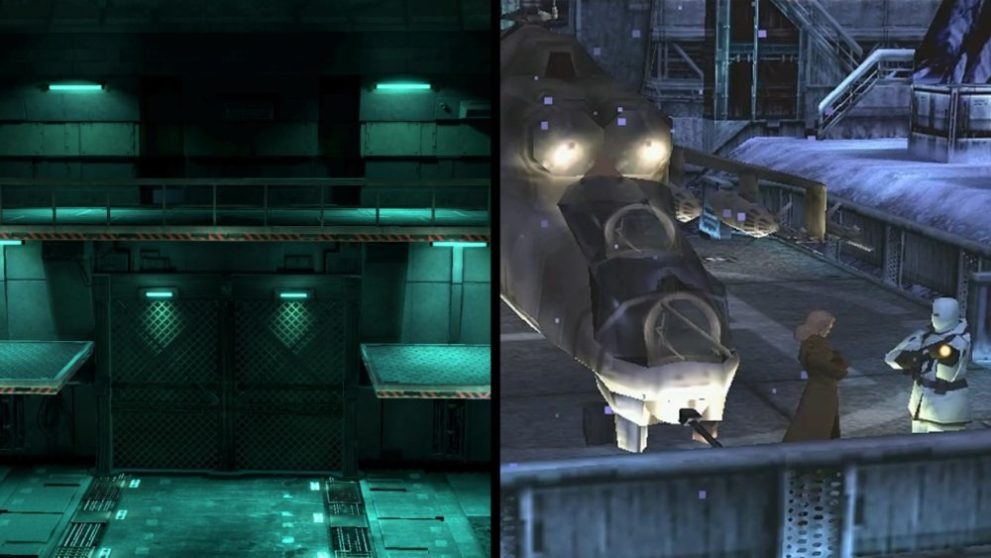
Shadow Moses Island is the setting of the entirety of Metal Gear Solid. Snake is sent to the island on a one-man infiltration mission to stop Liquid Snake and FOXHOUND from acquiring Metal Gear REX. Metal Gear RAY and a Gekko can show up on the Super Smash Bros. stage, but they weren’t in the first Metal Gear Solid game.
Luigi’s Mansion – Luigi’s Mansion (GameCube, 2001)
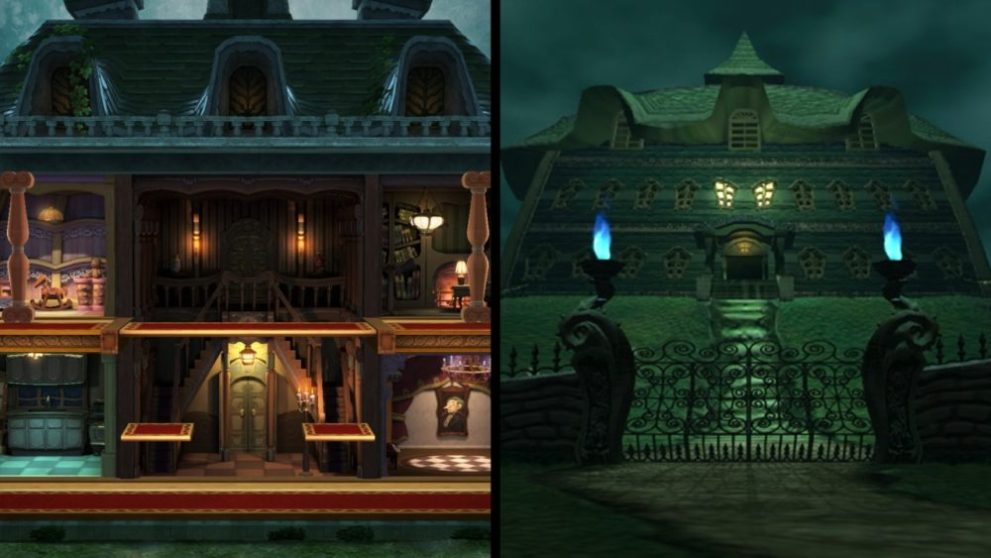
This GameCube launch title saw Luigi as the new owner of a mansion that he won from a contest he never entered. After his brother Mario gets kidnapped, Luigi must venture to the mansion himself to save him. Spooky stuff ensues.
Pirate Ship – The Legend of Zelda: The Wind Waker (GameCube, 2002)
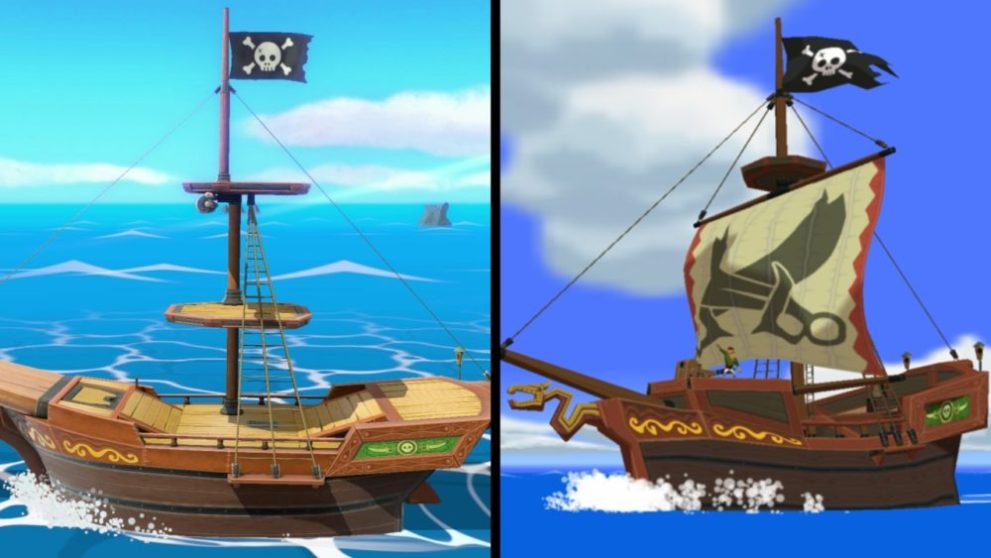
The pirate ship in question is owned by Tetra from The Legend of Zelda: The Wind Waker. After Link’s sister is kidnapped by the Helmaroc King, Link is forced to seek the aid of a group of pirates and cross The Great Sea.
Spear Pillar – Pokemon Diamond & Pearl (DS, 2006)

Spear Pillar is the location where Cyrus, the boss of Team Galactic, attempts to control either the legendary Pokemon Dialga or Palkia, depending on whether you have Diamond or Pearl. After Cyrus is defeated, the player gets the opportunity to capture one of the mythical Pokemon.
75 m – Donkey Kong (Arcade, 1981)
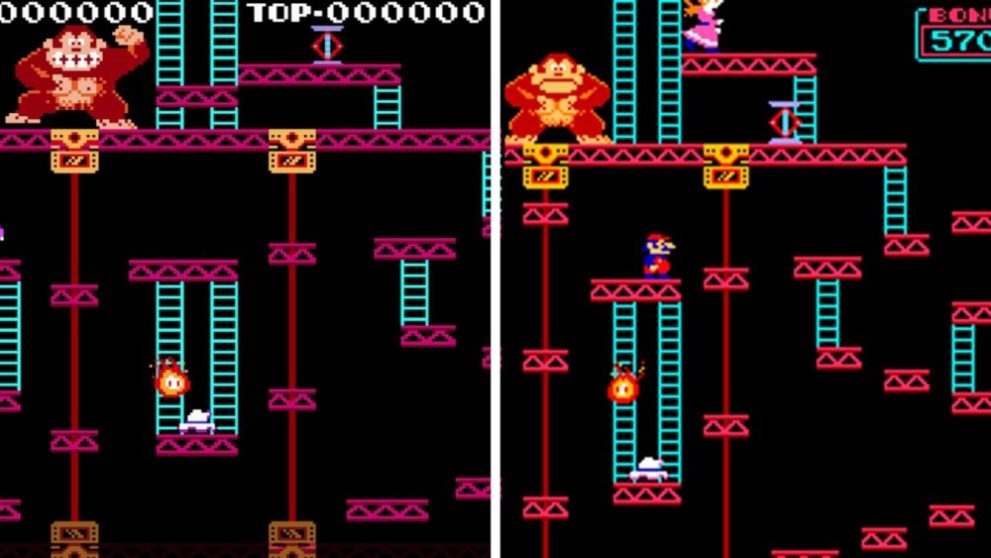
75 m was the third level of the arcade version of Donkey Kong and the second level of the NES version. In the Super Smash Bros. stage, the 8-bit Donkey Kong occasionally steps out of the background to pummel fighters.
Mario Bros. – Mario Bros. (Arcade, 1983)

The Mario Bros. arcade game featured a single screen. As you progressed through the phases, more and more enemies would emerge from the pipes at the top. In Super Smash Bros, players can pick up and throw the shellcreepers and sidesteppers at their opponents to send them flying horizontally.
Hanenbow – Electroplankton (DS, 2005)
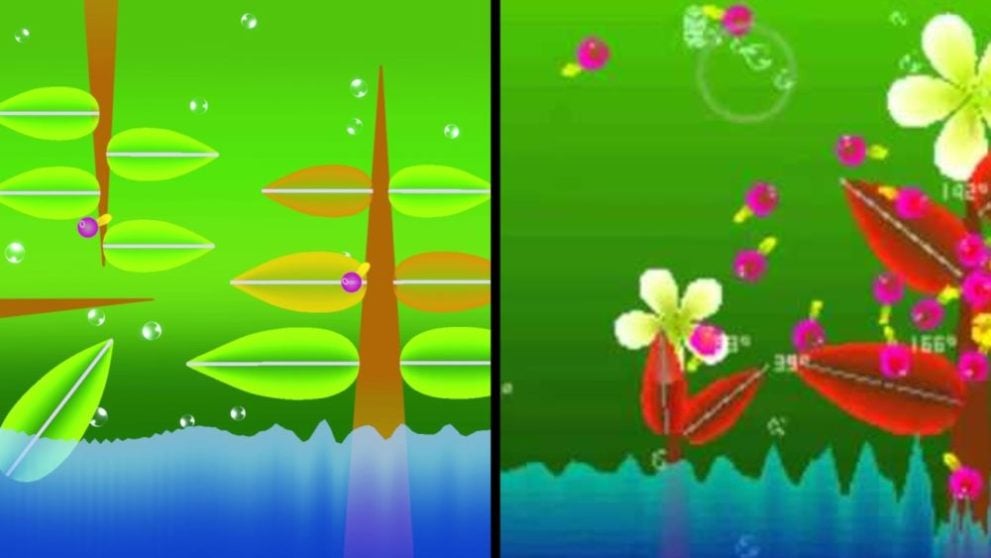
The Hanenbow stage originates from the unique Nintendo game known as Electroplankton; it was a playful tool for creating music. In the Hanenbow mode, sounds could be created by hitting leaves with the Hanenbow creatures.
Green Hill Zone – Sonic the Hedgehog (Genesis, 1991)
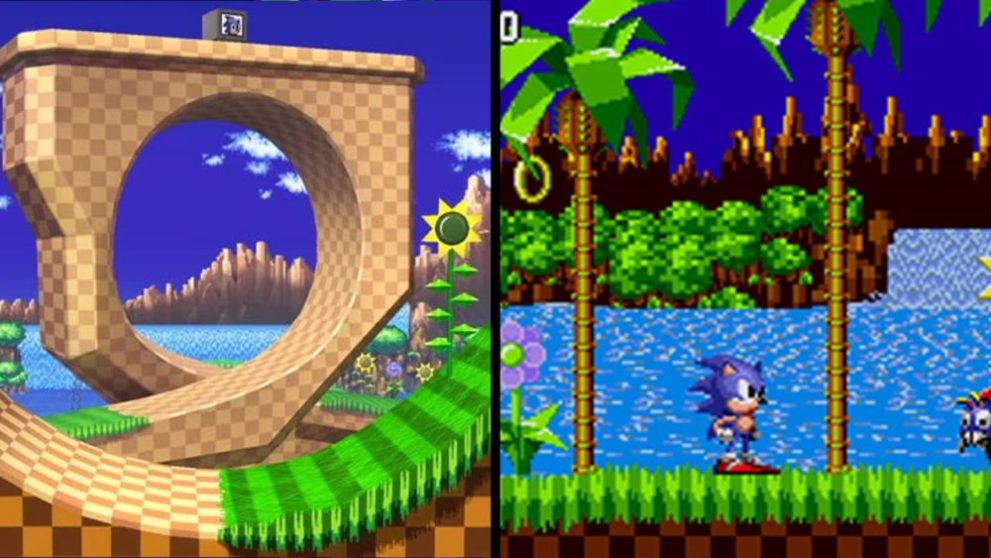
The most famous zone in Sonic history —and one of the most famous video game levels, period. Green Hill Zone was the opening level of the first Sonic the Hedgehog game. The Super Smash Bros. stage features a shuttle loop and item box in the background, as well as an interactive checkpoint post in the foreground.
3D Land – Super Mario 3D Land (3DS, 2011)
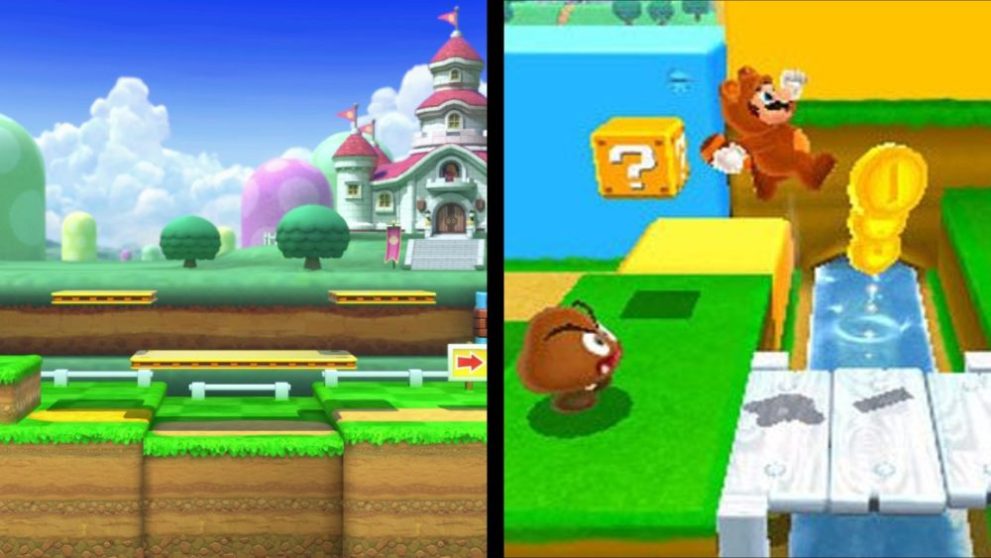
3D Land takes you on a tour of the Mushroom Kingdom as it is presented in Super Mario 3D Land. The Super Smash Bros. stage is inspired by a number of levels, including 1-1, 4-1, and 8-3.
Golden Plains – New Super Mario Bros. 2 (3DS, 2012)
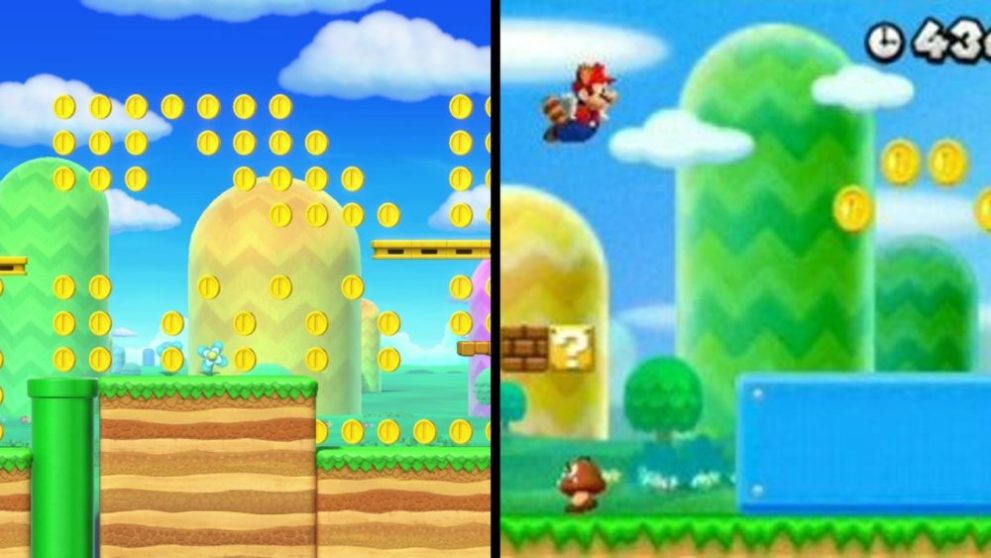
Golden Plains is the name of World 1 from New Super Mario Bros. 2. A main gimmick of that game was the overabundance of coins to collect, and that is most definitely reflected in its Super Smash Bros. counterpart.
Paper Mario – Paper Mario: The Thousand-Year Door (GameCube, 2004)
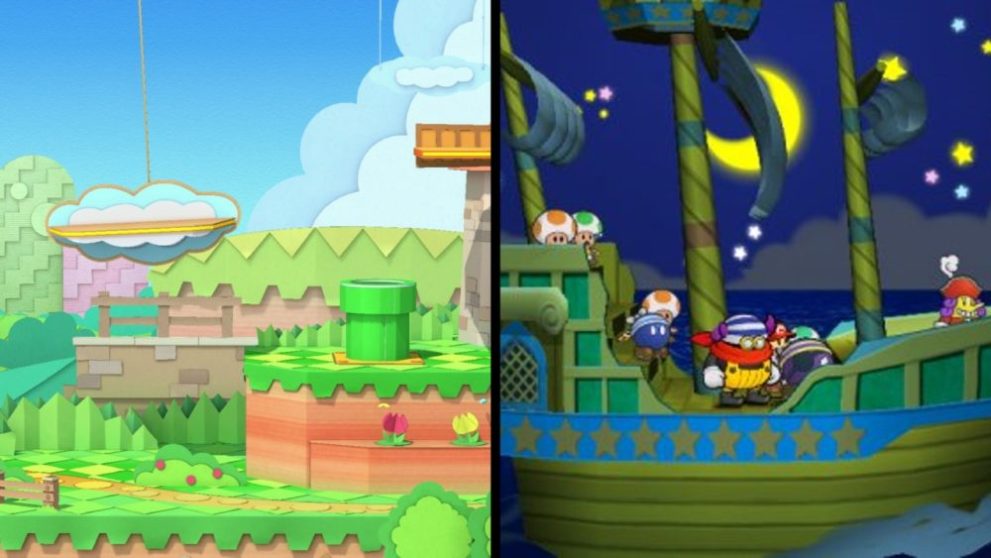
The Paper Mario stage is mainly based on two different Paper Mario games: The Thousand-Year Door and Sticker Star. The Thousand Year-Door is the earliest of the two and is represented by the S. S. Flavion section. From Sticker Star, we have Hither Thither Hill and Bowser Sky Castle.
Gerudo Valley – The Legend of Zelda: Ocarina of Time (N64, 1998)
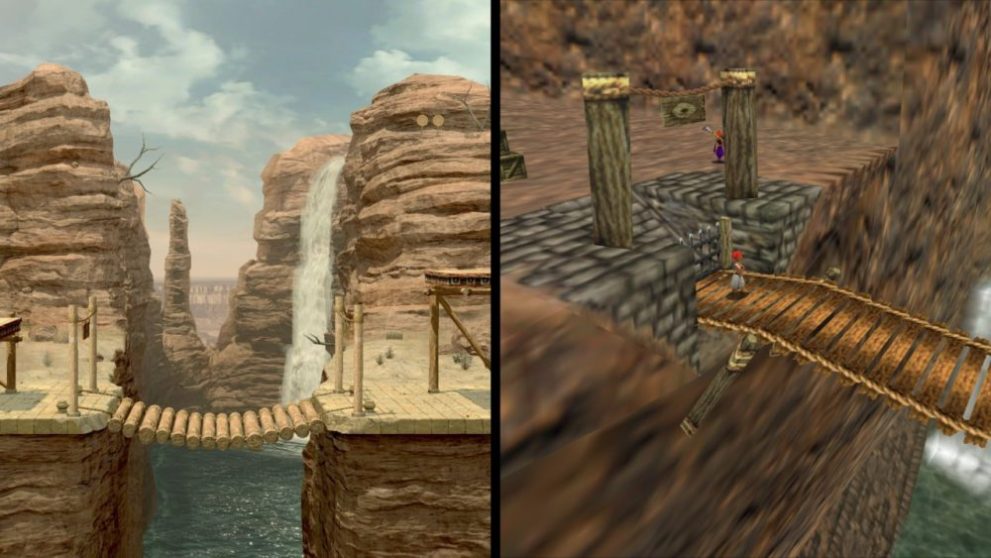
Gerudo Valley was home to the Gerudo tribe in The Legend of Zelda: Ocarina of Time. In that game, the bridge has been destroyed by the Gerudos, and Link has to leap it with the help of Epona.
Spirit Train – The Legend of Zelda: Spirit Tracks (DS, 2009)
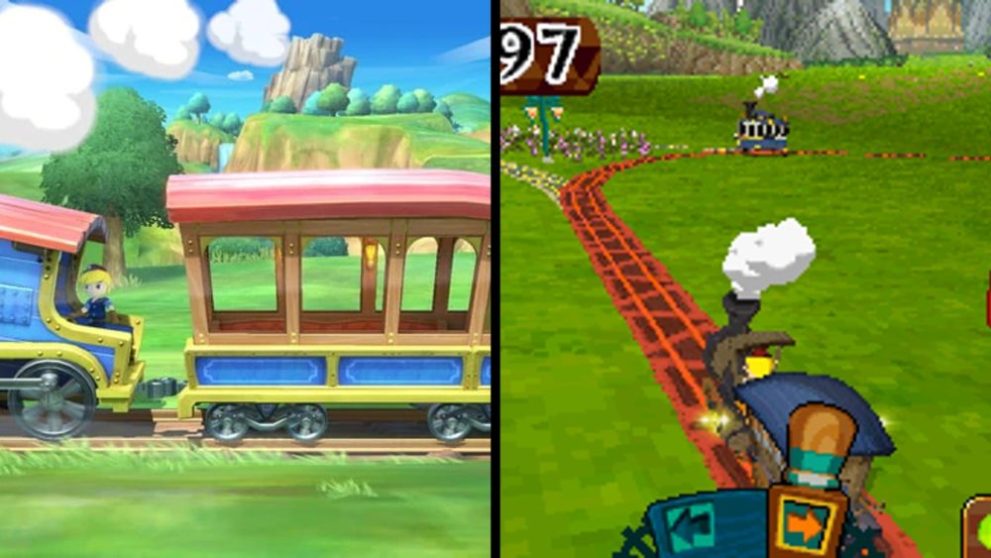
Spirit Train is based on the main means of travel in The Legend of Zelda: Spirit Tracks. Link will show up on this map, dressed in his Spirit Tracks gear, to drive the train (so long as nobody is playing as Link or Toon Link).
Dream Land GB – Kirby’s Dream Land (GB, 1992)
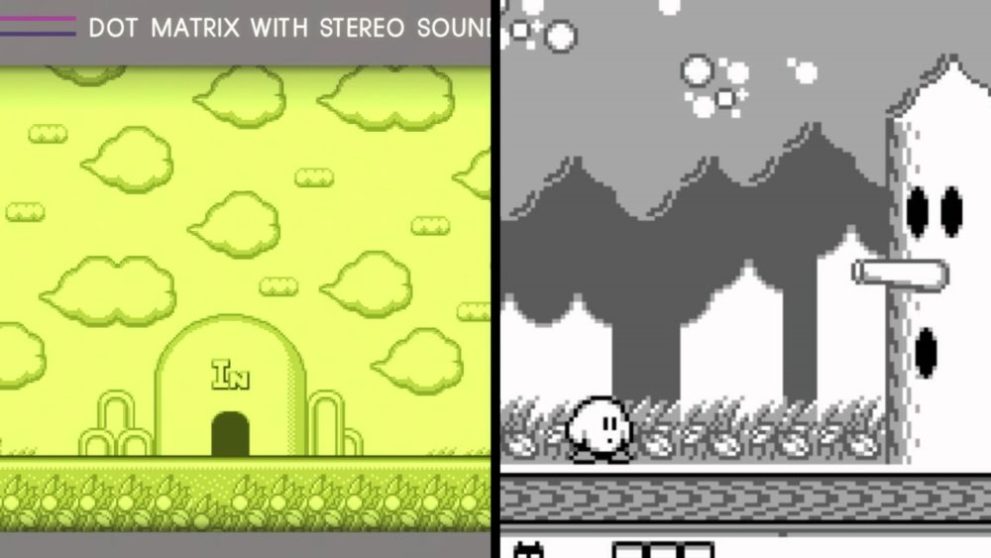
We’ve seen a couple stages based on Kirby’s Dream Land, but now we have one that is straight-up Kirby’s Dream Land. Dream Land takes us on a tour of the country exactly as it appeared in Kirby’s Dream Land, black and white screen and all (although, it looks more like puke-yellow).
Unova Pokemon League – Pokemon Black & White (DS, 2010)
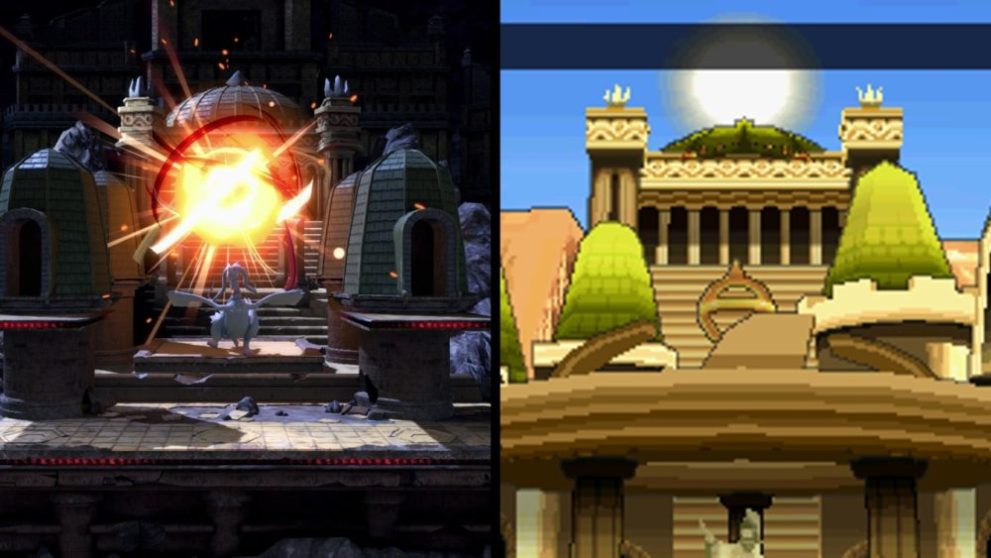
The Unova Pokemon League was the final stop for Pokemon trainers on their Black and White quest. This one isn’t like your typical Pokemon League; it’s a castle that belongs to the main rival of that game, N.
Prism Tower – Pokemon X & Y (3DS, 2013)
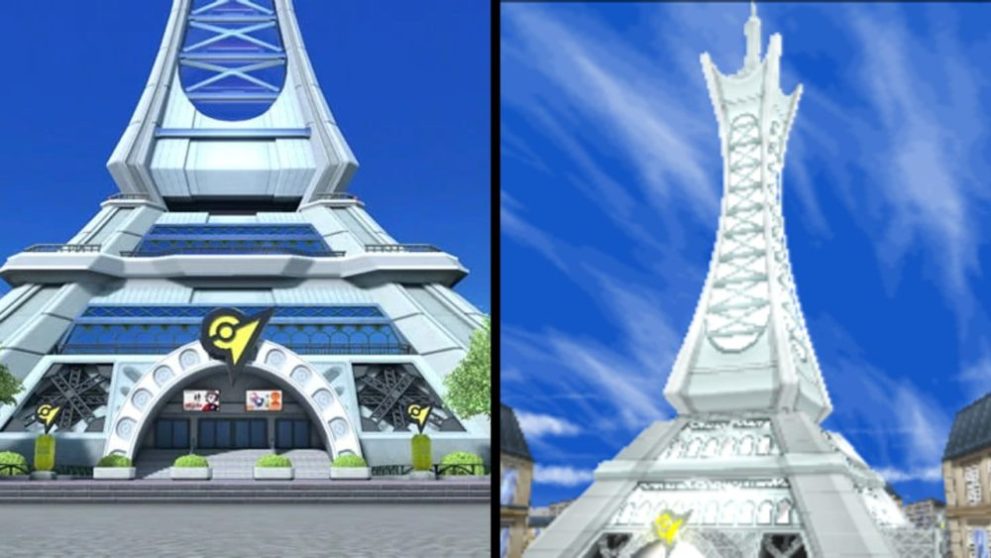
Lumiose City, the place which housed Prism Tower, was the most “3D” part of the first mainline Pokemon game in 3D. Prism Tower is actually the fifth gym in Pokemon X & Y, and it is where you fight Clemont for the Voltage badge.
Mute City SNES – F-Zero (SNES, 1990)
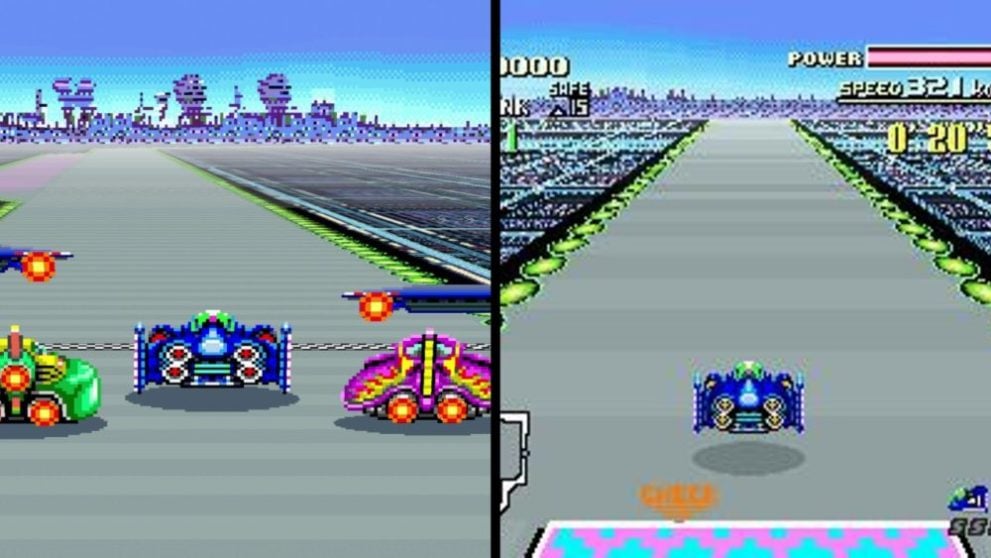
Just like Dream Land GB, Mute City SNES retains its original pixelated art style in this Super Smash Bros. stage. Mute City is the very first track in the original F-Zero game.
Magicant – Mother (Famicom, 1989)
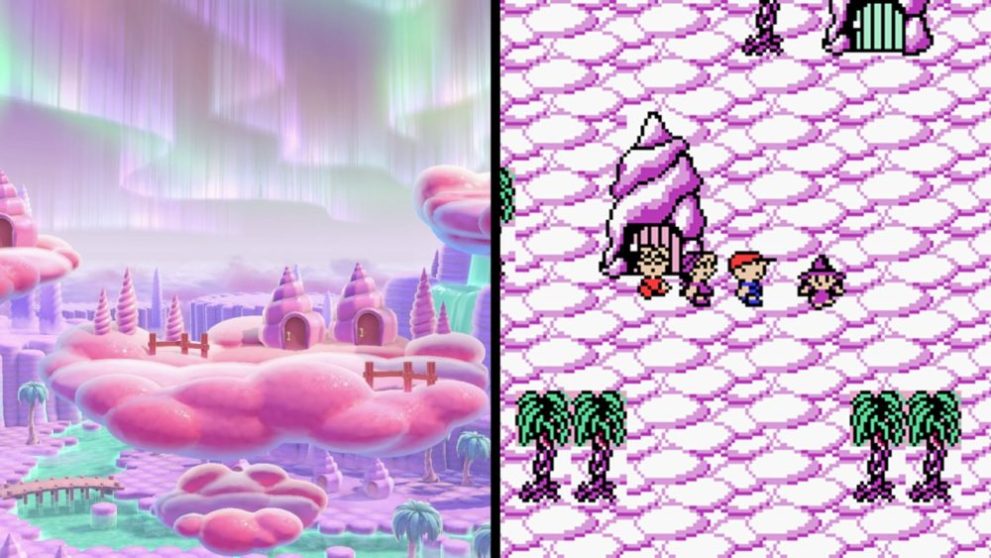
Magicant appears in both Mother and its sequel, EarthBound. In Mother, it is where the party finally meets Queen Mary. In EarthBound, it exists as a surreal place in Ness’ mind. In the Super Smash Bros. stage, occasional tears in the sky will show different scenes from Mother and EarthBound.
Arena Ferox – Fire Emblem Awakening (3DS, 2012)
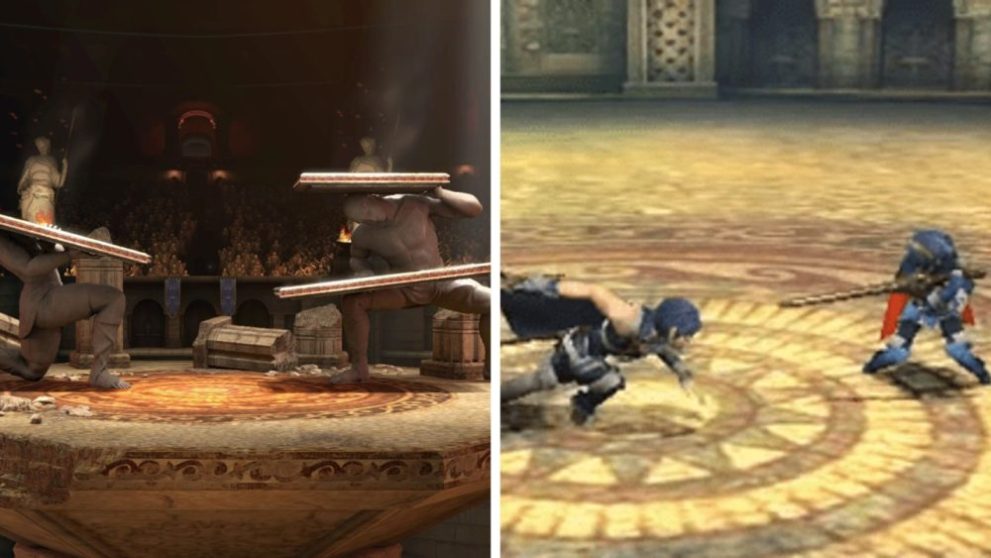
Whereas the other Fire Emblem stages merely embody general motifs of Fire Emblem games, Arena Ferox is an actual location in Fire Emblem Awakening. It is here that Chrom faces off with a masked combatant who claims to be Marth.
Reset Bomb Forest – Kid Icarus: Uprising (3DS, 2012)
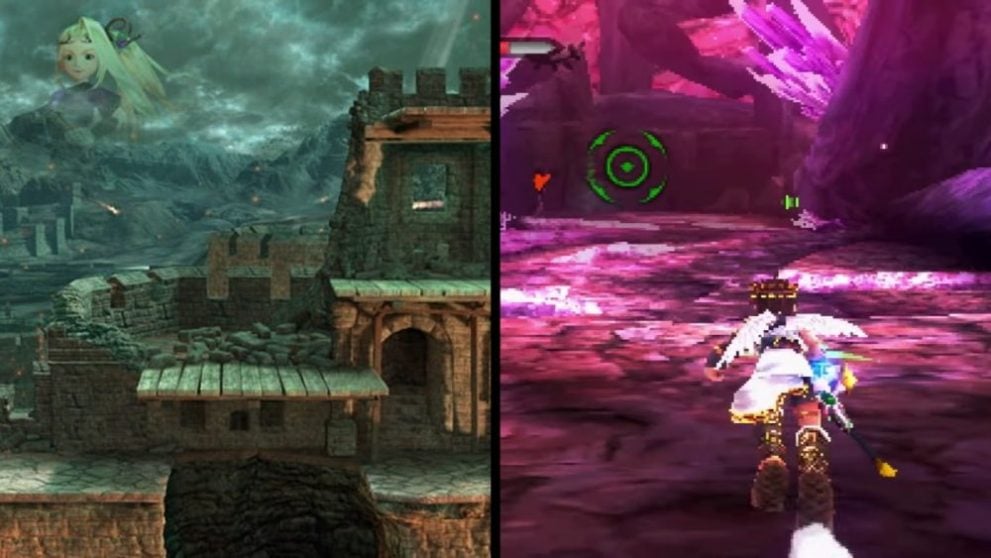
The Reset Bomb is a devastating weapon that annihilates those caught in the explosion and returns the area to a more natural state. One is used by the Goddess of Nature, Viridi, in Kid Icarus: Uprising when she becomes tired of the ensuing war among the humans.
Tortimer Island – Animal Crossing: New Leaf (3DS, 2012)
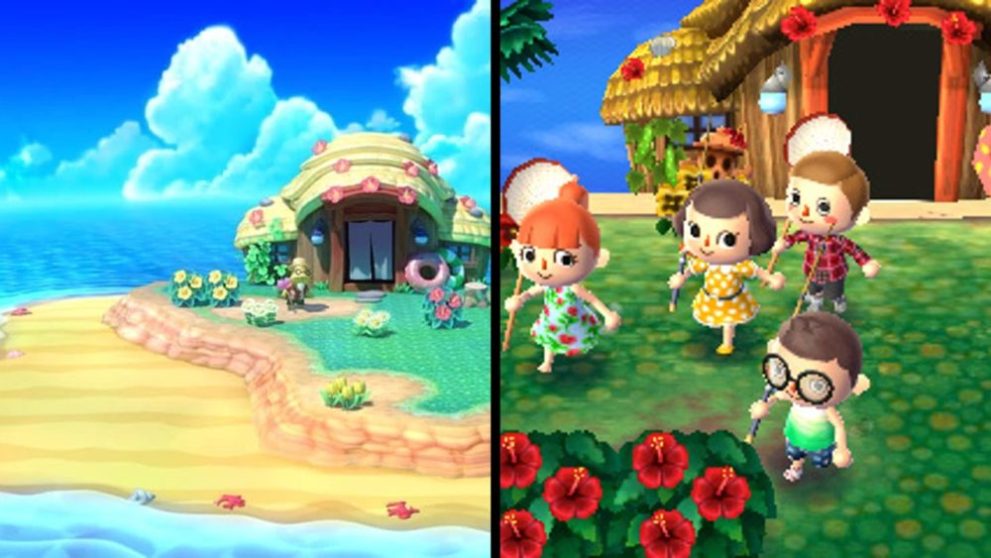
Tortimer Island is a remote location that villagers can visit in Animal Crossing: New Leaf. Different bugs, fish, fruits, and rare items can be found on the island. Tortimer is the name of the retired mayor.
Balloon Fight – Vs. Balloon Fight (Arcade, 1984)
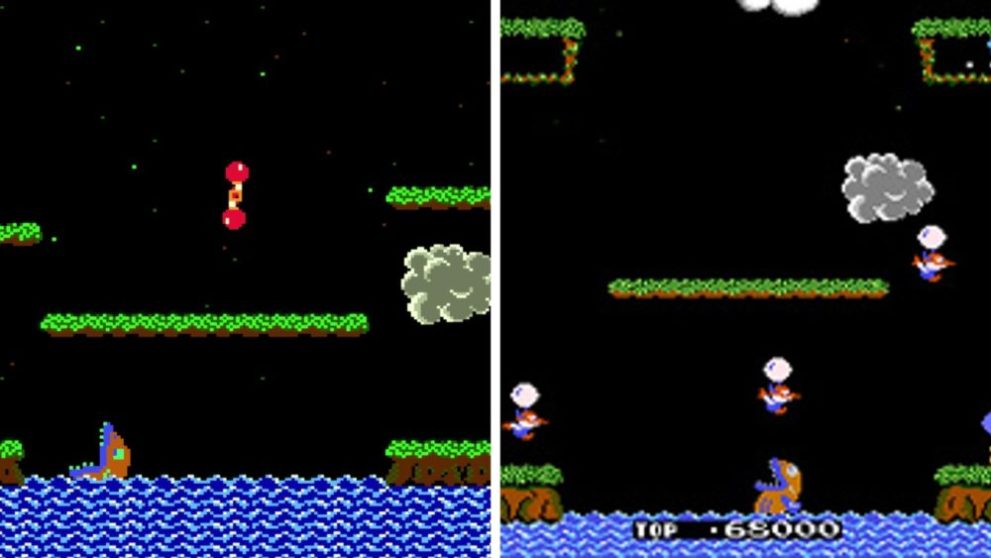
Predating the NES’ Balloon Fight is the arcade version, Vs. Balloon Fight. The Balloon Fight stage in Super Smash Bros. is based on these two games. This is the only stage where you can walk off one side of the screen and emerge from the other.
Living Room – Nintendogs + Cats (3DS, 2011)
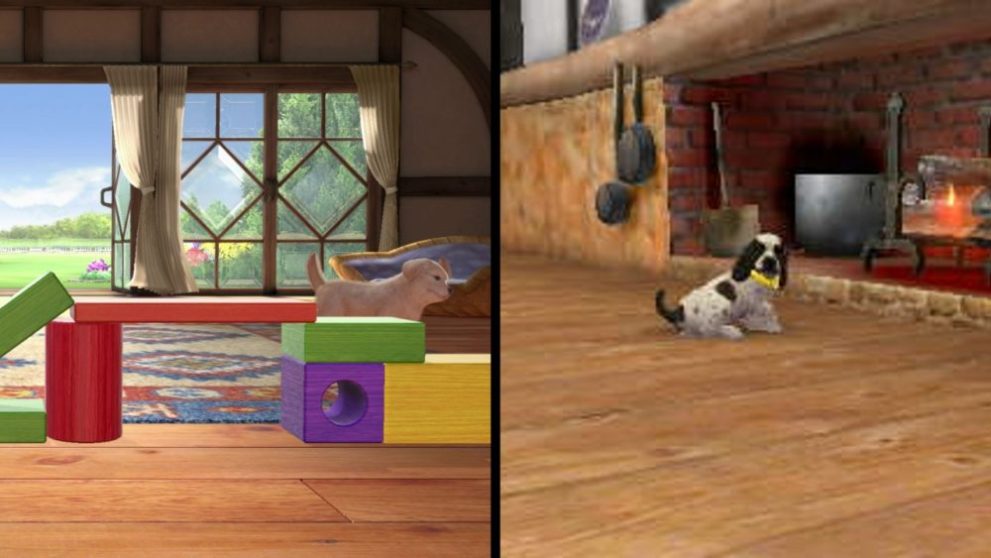
Living Room is based on the main location from Nintendogs + Cats, Country Home. It is here where you can look after and play with your different pets. Toys from the game appear as hazards in the Super Smash Bros. stage.
Find Mii – Find Mii II (3DS, 2011)
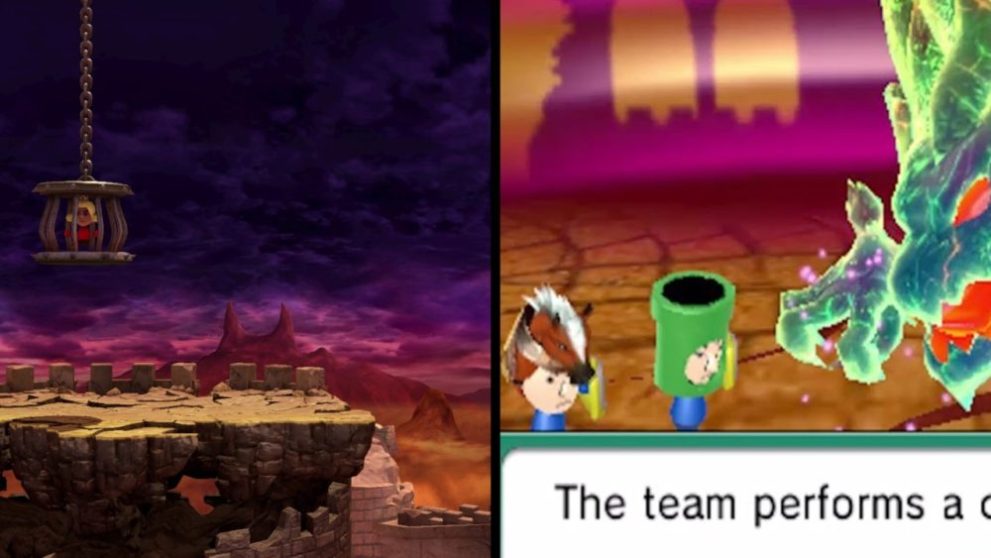
The Find Mii stage is based on the Find Mii II expansion. Find Mii was a streetpass game for the 3DS in which you rally your army by walking past other 3DS owners. The Dark Lord was the final boss of Find Mii II.
Tomodachi Life – Tomodachi Life (3DS, 2013)

The apartments featured in the Tomodachi Life stage are the Mii Apartments that your friends and family lived in in Tomodachi Life. Miis can hang out with each other, try on clothes, perform musicals, and even fall in love.
PictoChat 2 – Nintendo DS System (2004)
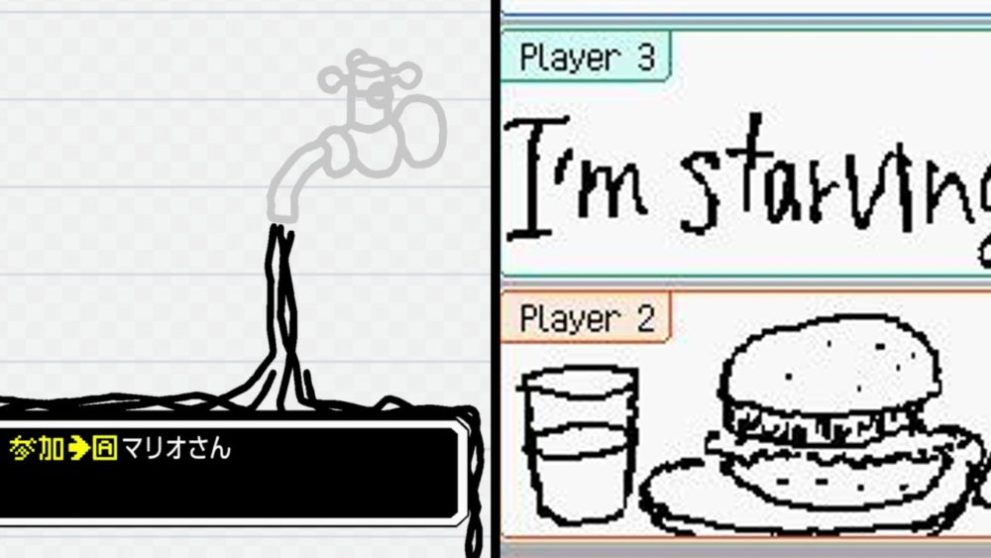
PictoChat was an application on the original Nintendo DS system. Up to 16 users could join a chatroom using a local wireless connection and talk to each other through text or drawings.
Mushroom Kingdom U – New Super Mario Bros. U (Wii U, 2012)
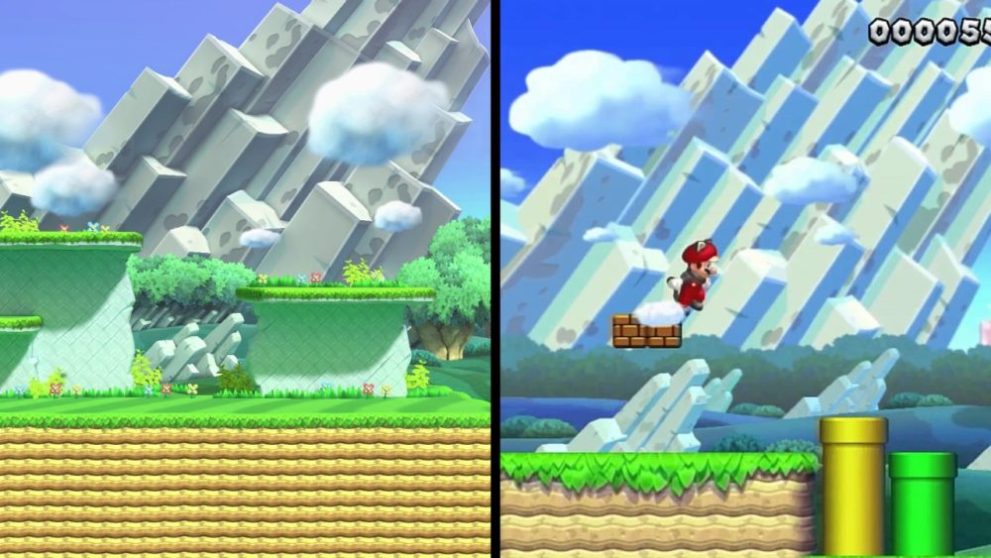
Mushroom Kingdom U takes us through several different worlds and levels from New Super Mario Bros. U: Acorn Plains, Rock-Candy Mines, Meringue Clouds, and Side Life Tower.
Mario Galaxy – Super Mario Galaxy (Wii, 2007)
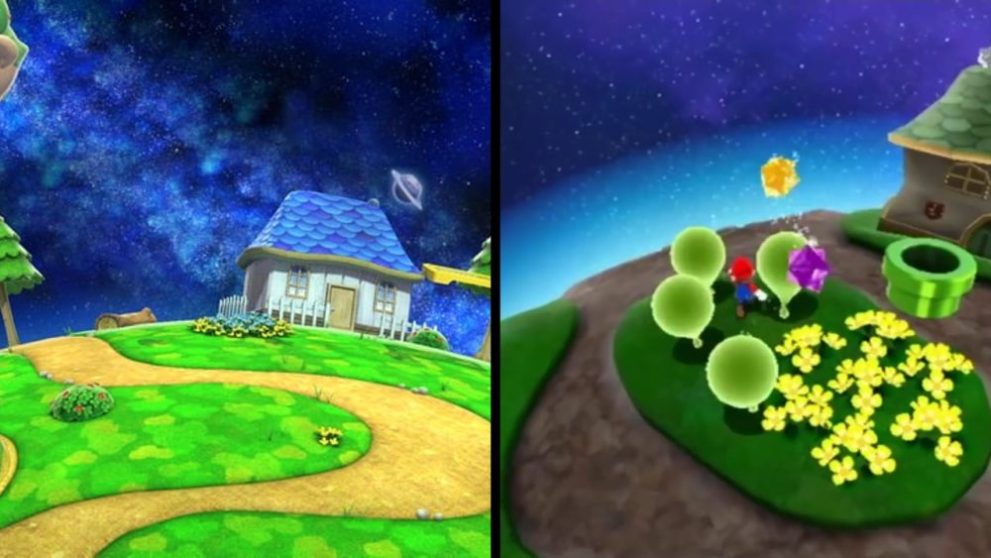
The fighting area of Mario Galaxy is based on Super Mario Galaxy’s Gateway Galaxy. This is the very first level of the game. It is here where Mario first met Rosalina and the Lumas.
Mario Circuit – Mario Kart 8 (Wii U, 2014)
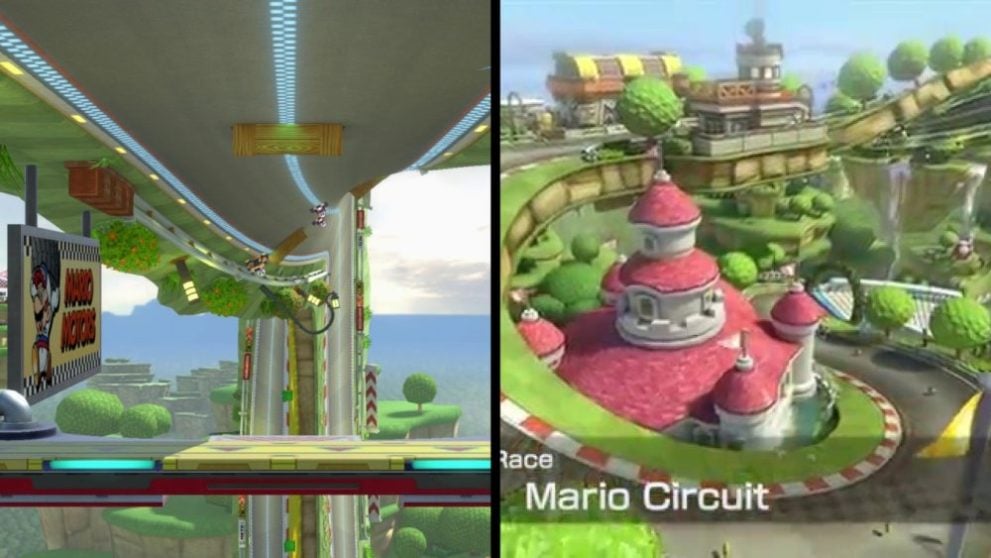
Super Smash Bros. for Wii U released not too long after Mario Kart 8, but the team were still able to squeeze a stage in based on that game. Mario Circuit is, of course, based on the track of the same name from Mario Kart 8.
Skyloft – The Legend of Zelda: Skyward Sword (Wii, 2011)
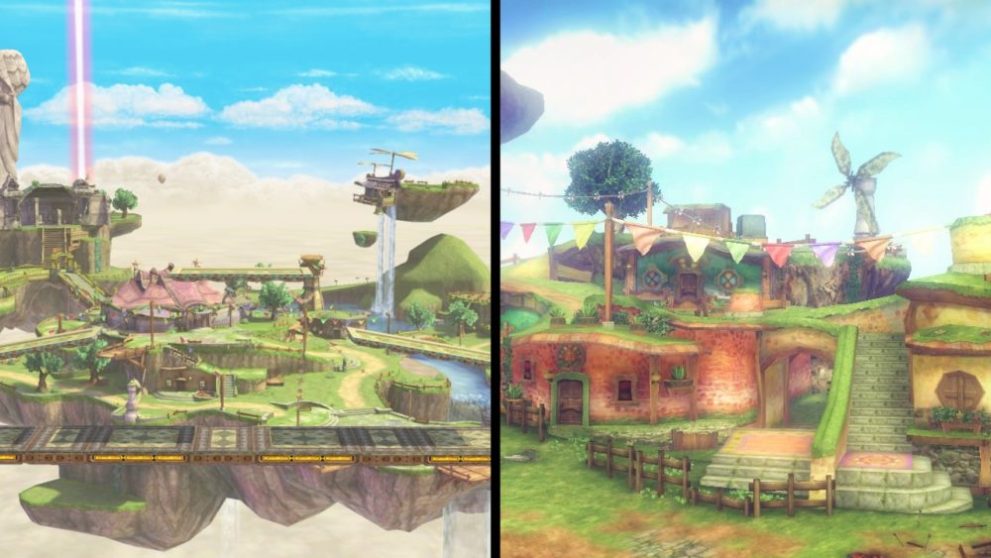
Skyloft, also known as Isle of the Goddesses, is the starting area and Link and Zelda’s homeworld in The Legend of Zelda: Skyward Sword. It was here that Link learned to ride on a Loftwing.
The Great Cave Offensive – Kirby Super Star (SNES, 1996)
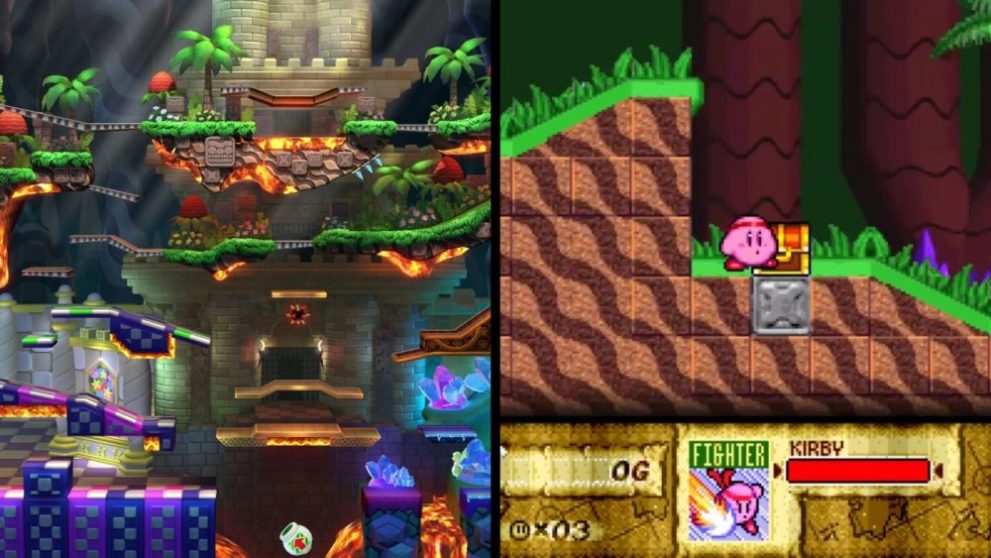
The Great Cave Offensive is one of the modes from Kirby Super Star. It is a sprawling maze which Kirby must traverse through, collecting treasure and defeating bosses.
Kalos Pokemon League – Pokemon X & Y (3DS, 2013)
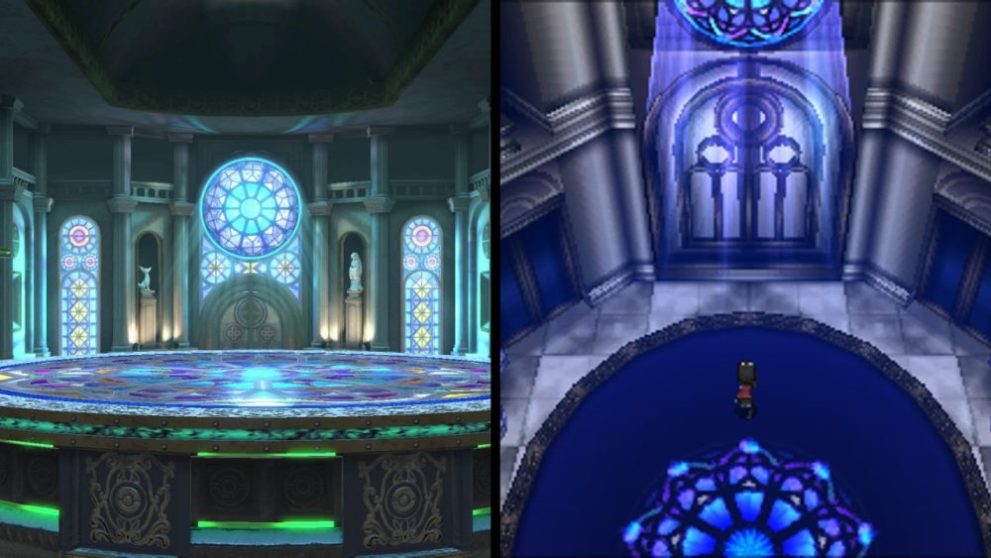
The Kalos Pokemon League is the last challenge in Pokemon X & Y. It features a much grander interior design than past Pokemon Leagues. In Super Smash Bros., several different legendary Pokemon show up to cause chaos on the stage.
Coliseum – Fire Emblem: Shadow Dragon and the Blade of Light (Famicom, 1990)
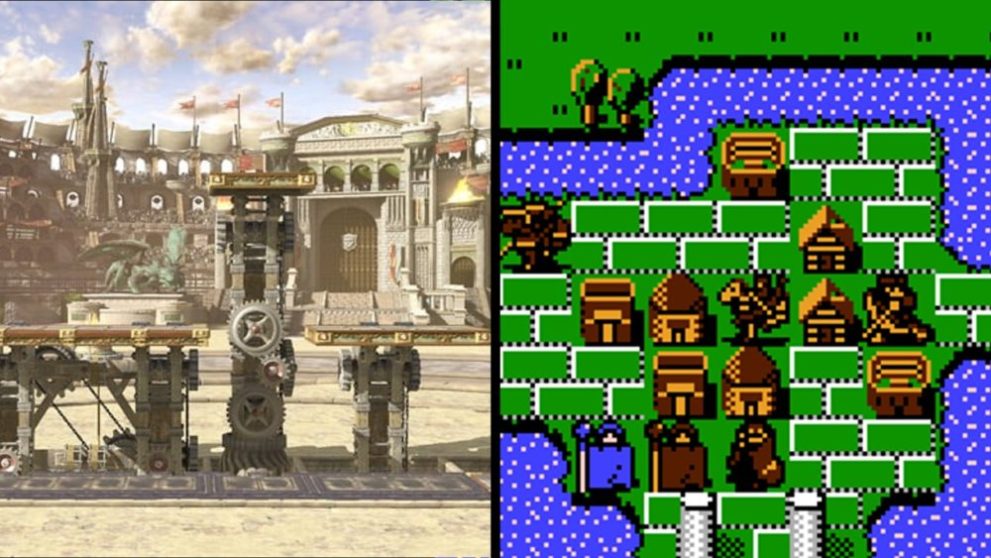
Like Castle Siege, Coliseum isn’t based on a specific location from Fire Emblem. Coliseums (sometimes called Arenas) are facilities in the Fire Emblem series that you can use to train your units. The first of which appeared in Shadow Dragon and the Blade of Light.
Flat Zone X – Fire (Game & Watch, 1980)
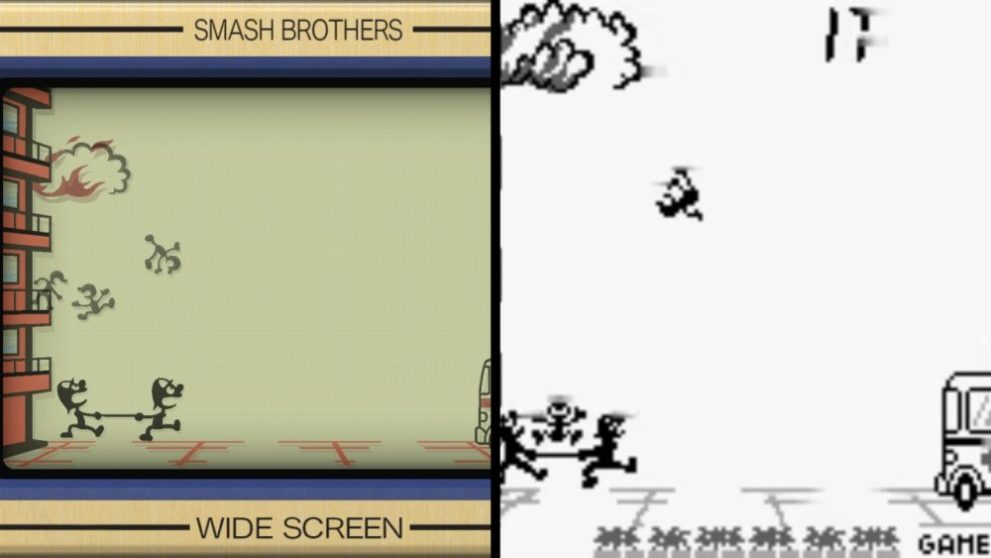
Flat Zone X cycles through a few different Game & Watch games for its layout. The earliest game that it uses is Fire. In Fire, two firemen must catch people on a trampoline and bounce them to safety. Flat Zone X also uses the games Oil Panic, Lion, and Chef.
Palutena’s Temple – Kid Icarus: Uprising (3DS, 2012)

Palutena’s Temple is where the goddess was swiped from in the original Kid Icarus, but it doesn’t make its full appearance until 2012’s Kid Icarus: Uprising. It is here where Pit has to fight Palutena after she is possessed by the Chaos Kin.
Gamer – Game & Wario (Wii U, 2013)
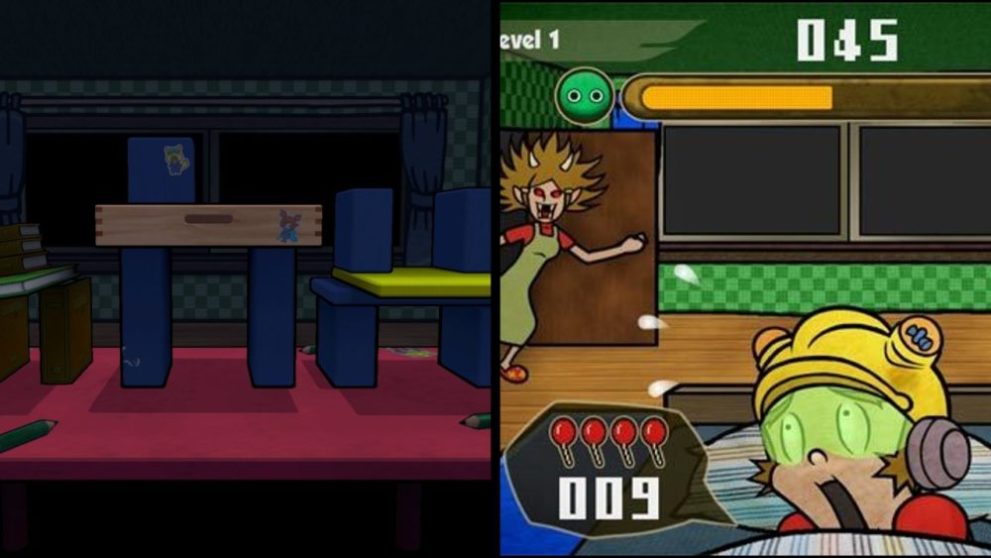
Gamer was the mini-game from Game & Wario that featured the scary mom, 5-Volt. In this game, players have to complete microgames on the Wii U gamepad while paying attention to the TV screen to make sure Mom doesn’t catch you playing games at bedtime.
Garden of Hope – Pikmin 3 (Wii U, 2013)
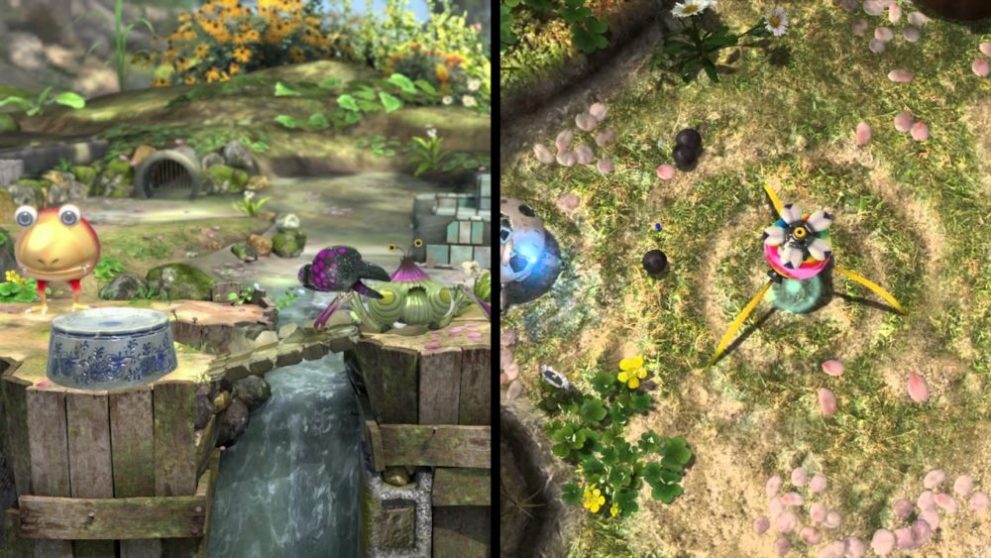
Garden of Hope is the first area that Alph, Brittany, and Charlie began exploring in Pikmin 3 and where they discovered the new rock and winged species of Pikmin.
Town and City – Animal Crossing: City Folk (Wii, 2008)
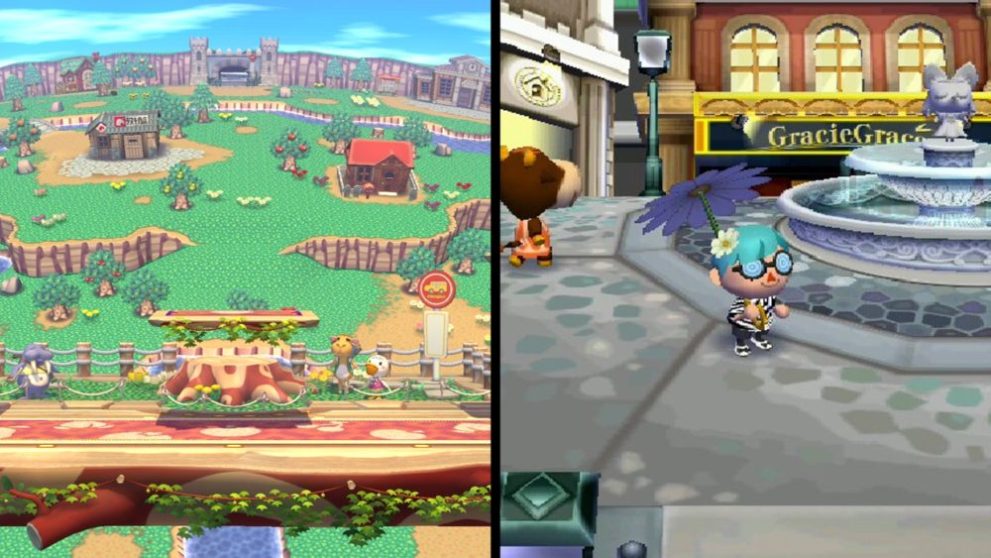
The main new feature of the Wii’s Animal Crossing: City Folk was that you could leave your small village and go venture around the big city. In the Town and City stage in Super Smash Bros., the background will periodically travel from the village to the city and back again.
Wii Fit Studio – Wii Fit (Wii, 2007)
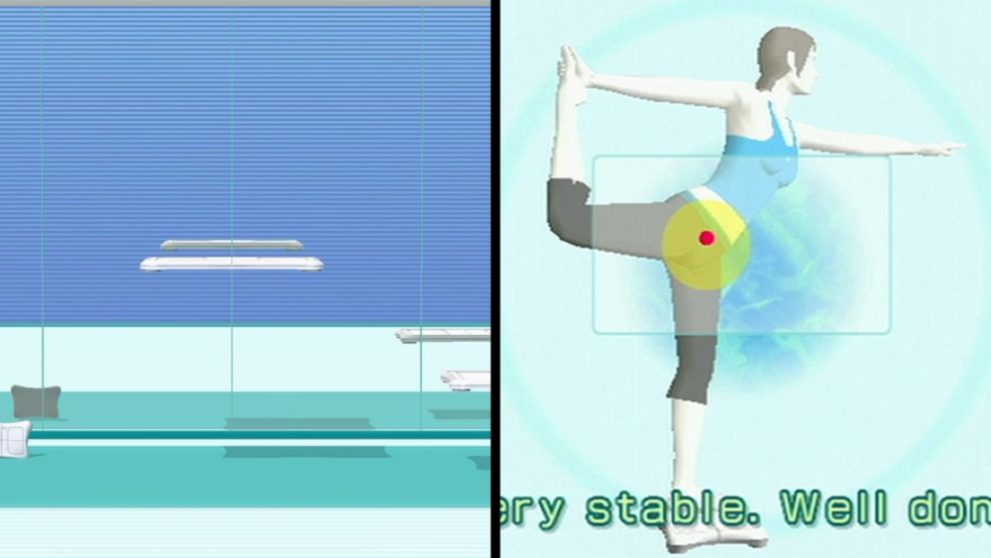
When you were doing your workouts in Wii Fit, the Wii Fit Trainer was coming at you from none other than the Wii Fit Studio. The Super Smash Bros. stage is pretty similar to that locale from Wii Fit but with added Wii Balance Board platforms.
Boxing Ring – Punch-Out!! (Wii, 2009)
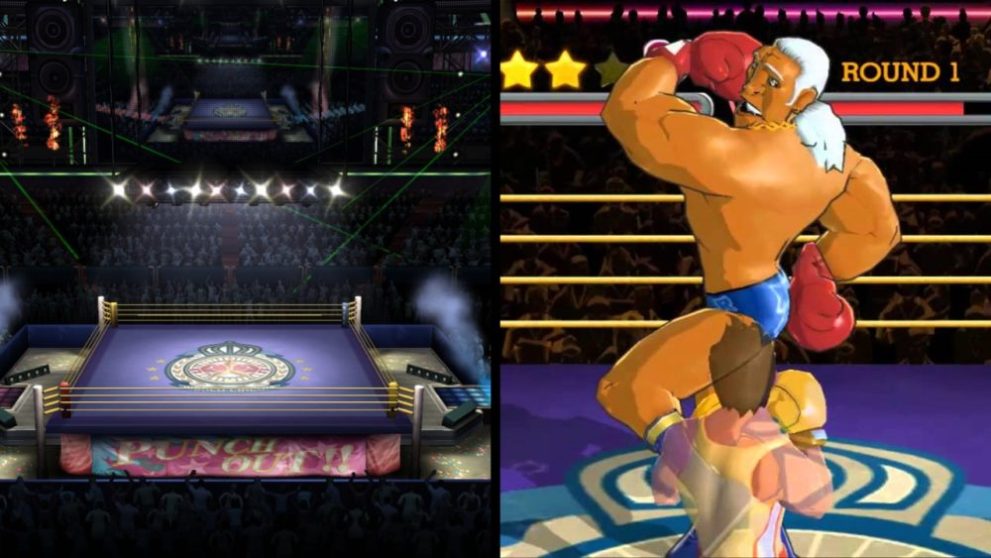
A boxing ring has obviously appeared in every Punch-Out!! game since the first one, seeing as it is a boxing franchise, but the Super Smash Bros. Boxing Ring stage is specifically based on that from the Wii version of Punch-Out!! It was here where Little Mac took on a plethora of fighters, including Bald Bull, Glass Joe, Mr. Sandman, and even Donkey Kong.
Gaur Plain – Xenoblade Chronicles (Wii, 2010)
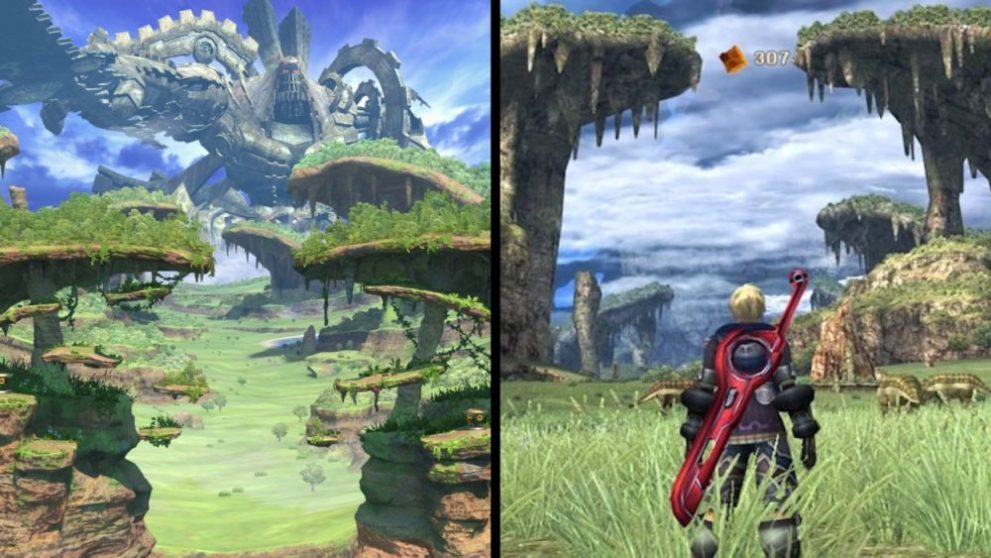
Gaur Plain is the wide open expanse that is located on the Bionis’ leg in Xenoblade Chronicles. In the Super Smash Bros. stage, the Mechonis can be seen off in the distance. The Bionis is home to the Homs, Nopon, and High Entia, whereas the Mechonis is home to the Mechon.
Duck Hunt – Duck Hunt (NES, 1984)
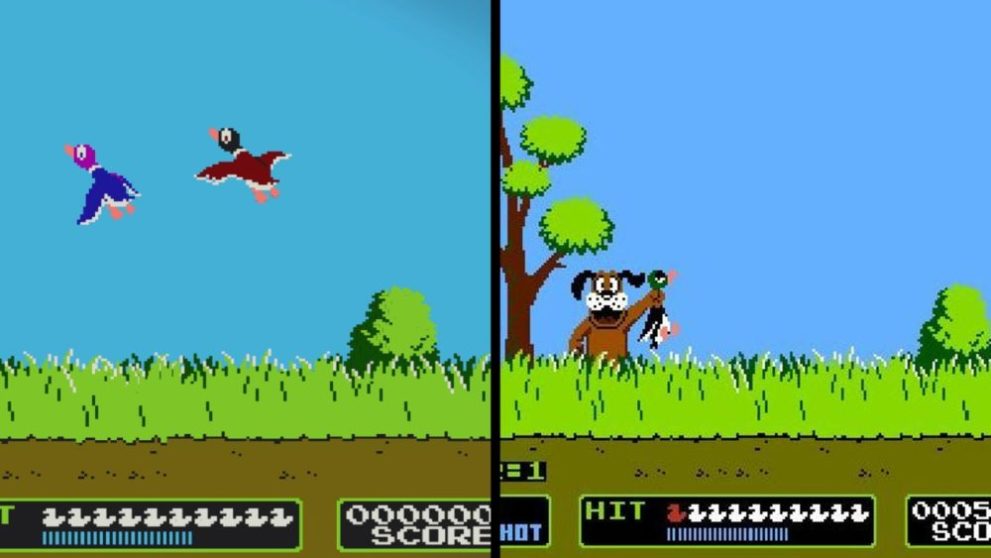
The Duck Hunt stage is pretty much just the screen from Duck Hunt. Fighters can attack some birds if they so choose, and the dog will pop his head out from time-to-time to create a usable platform.
Wrecking Crew – Vs. Wrecking Crew (Arcade, 1984)
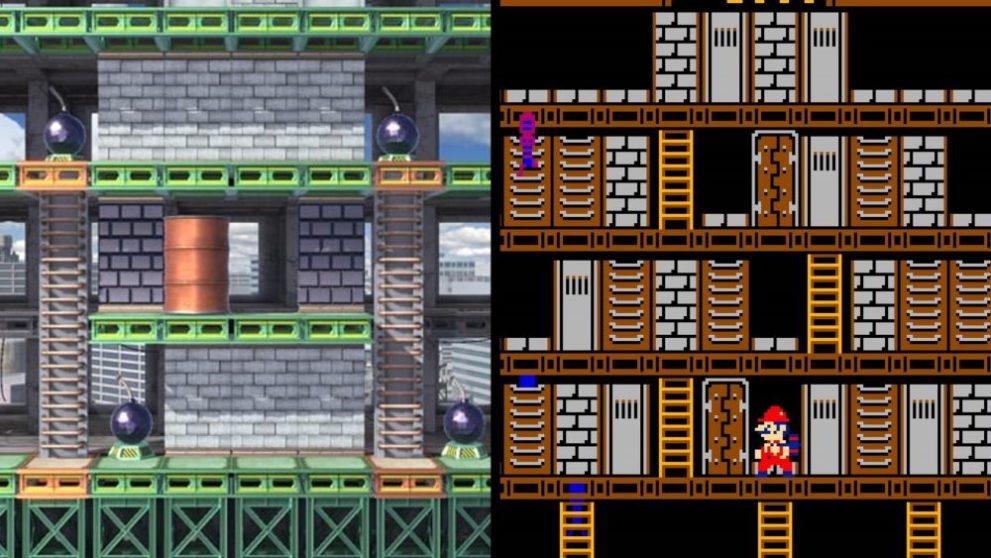
The Wrecking Crew stage isn’t 8 or 16-bit like some of its other retro brethren —it has been recreated in HD. In Wrecking Crew, you played as Mario and had to destroy all of the stone walls in a given phase.
Pilotwings – Pilotwings (SNES, 1990)
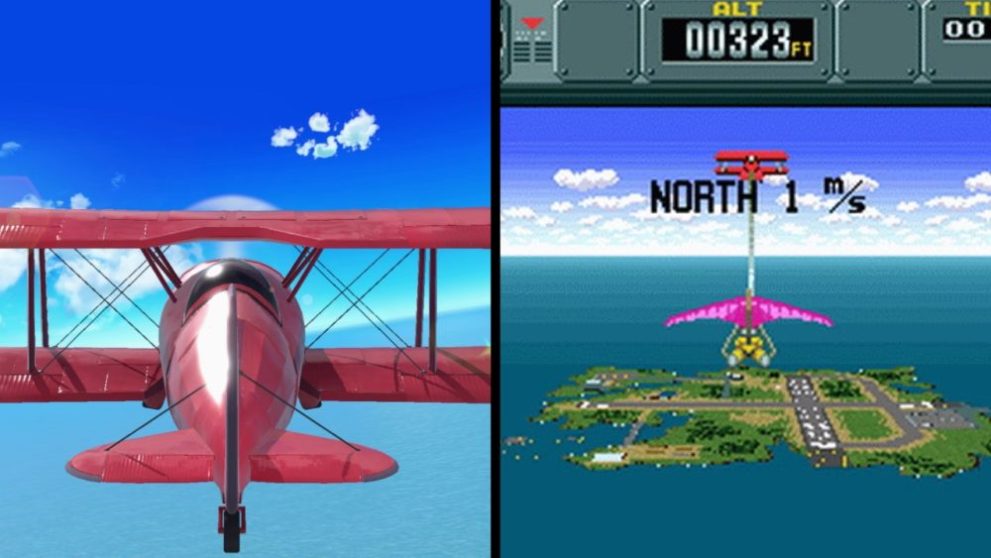
The Pilotwings stage contains the red biplane from the original Pilotwings and yellow plane from Pilotwings Resort. In the background, players can see the runway from Pilotwings, and they will also be taken to Wuhu Island, the setting for Pilotwings Resort.
Wuhu Island – Wii Fit (Wii, 2007)
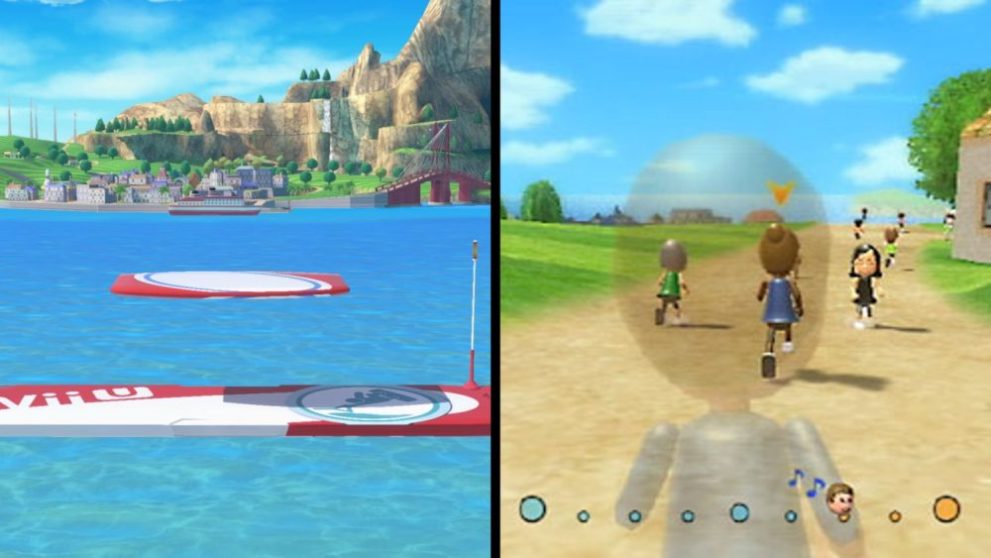
Speaking of Wuhu Island, here’s Wuhu Island. This location has appeared in several different Nintendo games, starting with the jogging mini-game in Wii Fit. It also appears in Wii Sports Resort, Wii Fit Plus, Pilotwings Resort, Mario Kart 7, and Wii Fit U.
Windy Hill Zone – Sonic Lost World (Wii U, 2013)
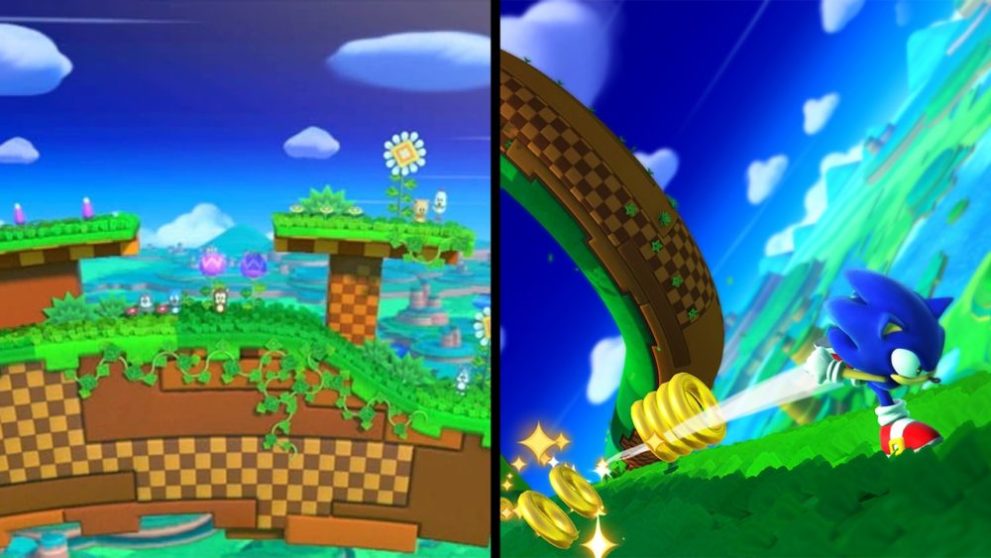
Like Green Hill Zone, Windy Hill Zone is another opening level, this time from the Wii U’s Sonic Lost World. The Super Smash Bros. stage is quite bendy, just like it was in Lost World.
Wily Castle – Mega Man 2 (NES, 1988)
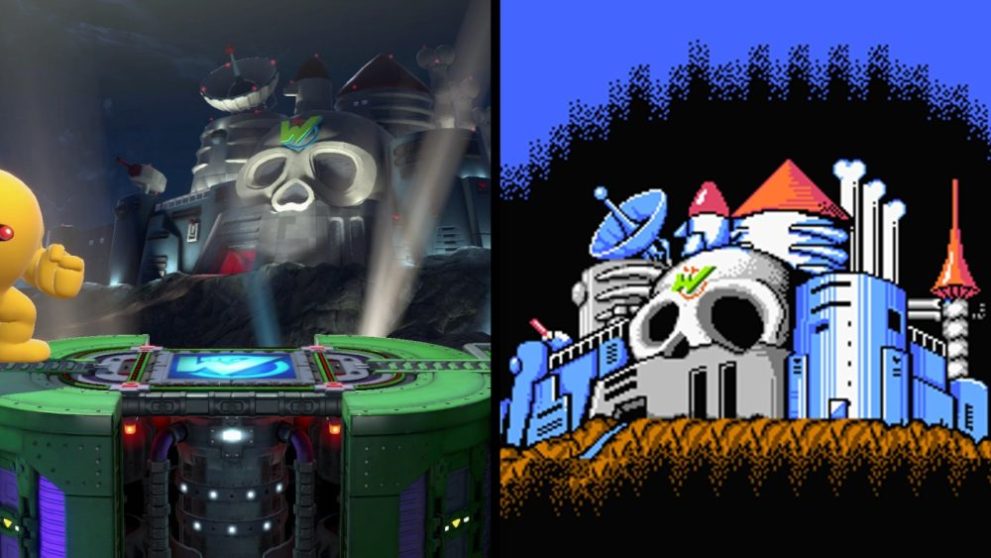
Wily Castle has appeared in several different Mega Man games since the very first one, but it’s appearance in Super Smash Bros. is almost identical to that of Mega Man 2. The infamous Yellow Devil, however, does hail from the original Mega Man.
Pac-Land – Pac-Land (Arcade, 1984)
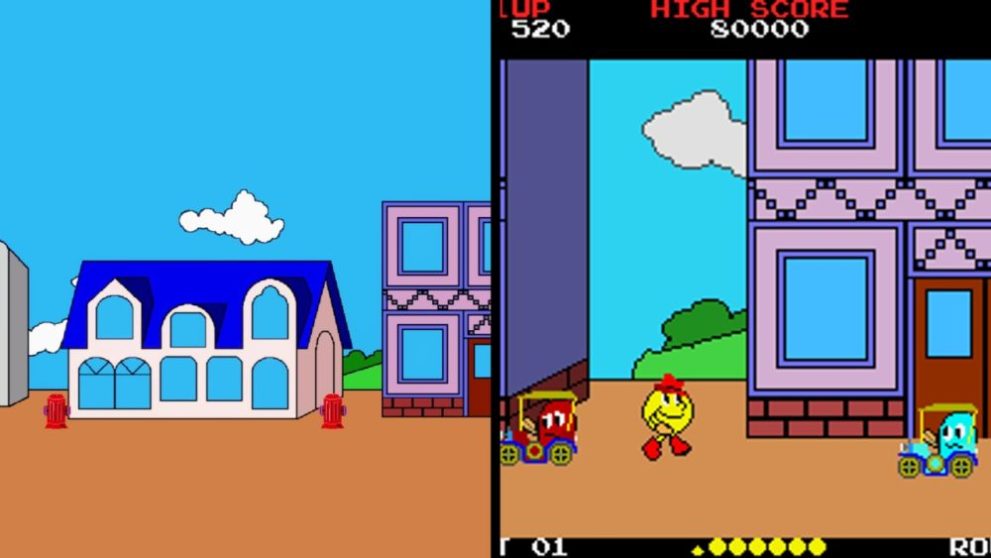
The more iconic Pac-Maze stage from Super Smash Bros. for Nintendo 3DS hasn’t been confirmed in Ultimate yet, and all we’re left with to represent Pac-Man is the Pac-Land stage from the strange Pac-Land game. In that game, it’s Pac-Man’s job to find the fairy and bring it back to its home.
Super Mario Maker – Super Mario Maker (Wii U, 2015)
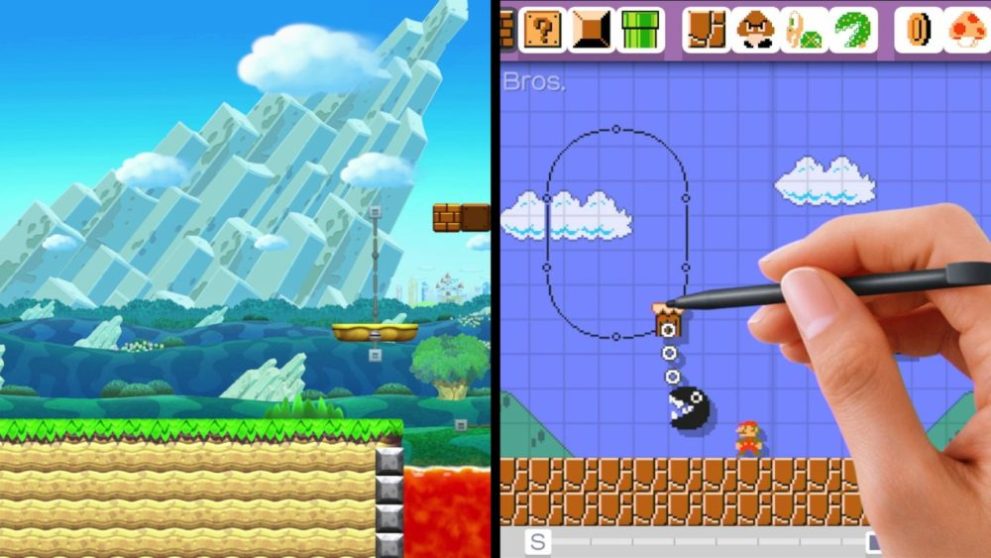
Super Mario Maker is quite a unique stage that is different every time you play it. When the match begins, the stage is built before your very eyes by a giant hand with a Wii U stylus. This is reminiscent of how players could create their own Mario levels in Super Mario Maker.
Suzaku Castle – Street Fighter II: The World Warrior (Arcade, 1991)
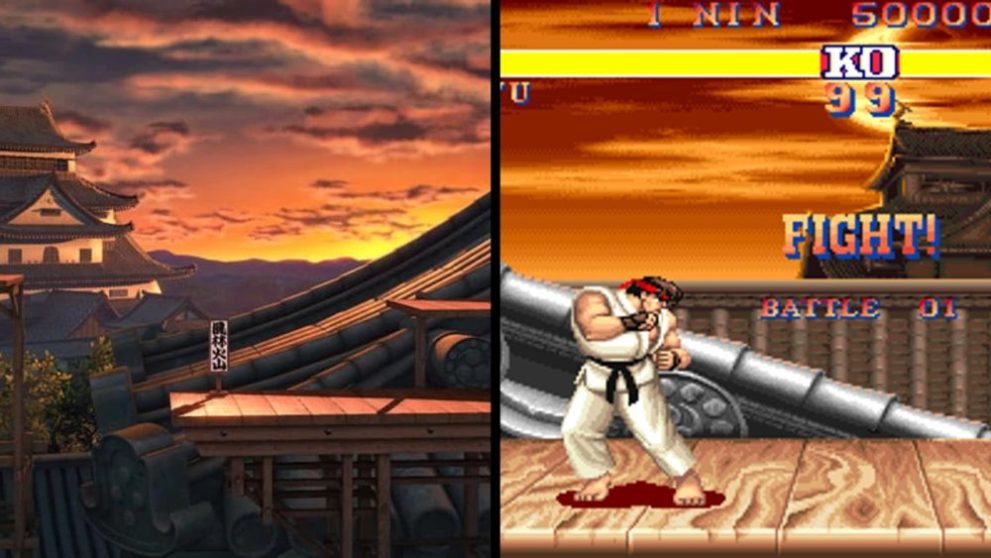
Suzaku Castle is the stage belonging to Ryu in Street Fighter II: The World Warrior. In that game, all stages are a single flat platform, but that isn’t quite the case in Super Smash Bros. It has a solid platform in the lower-right with two small floating platforms on the left.
Midgar – Final Fantasy VII (PlayStation, 1997)
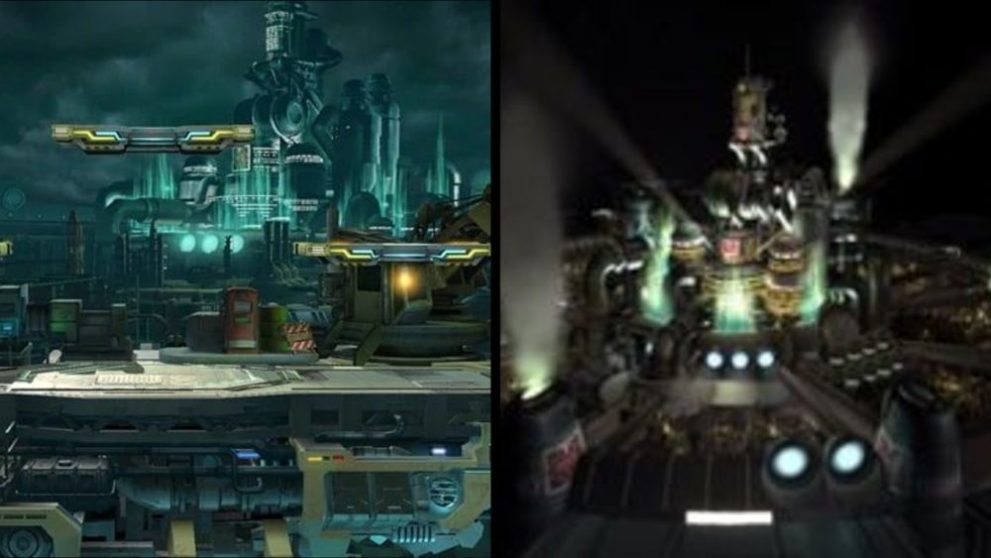
Midgar is where the story of Final Fantasy VII begins. In the opening of the game, Cloud and Barrett, two members of the eco-terrorist group AVALANCHE, destroy a Shinra Mako reactor.
Umbra Clock Tower – Bayonetta (Xbox 360 & PS3, 2009)
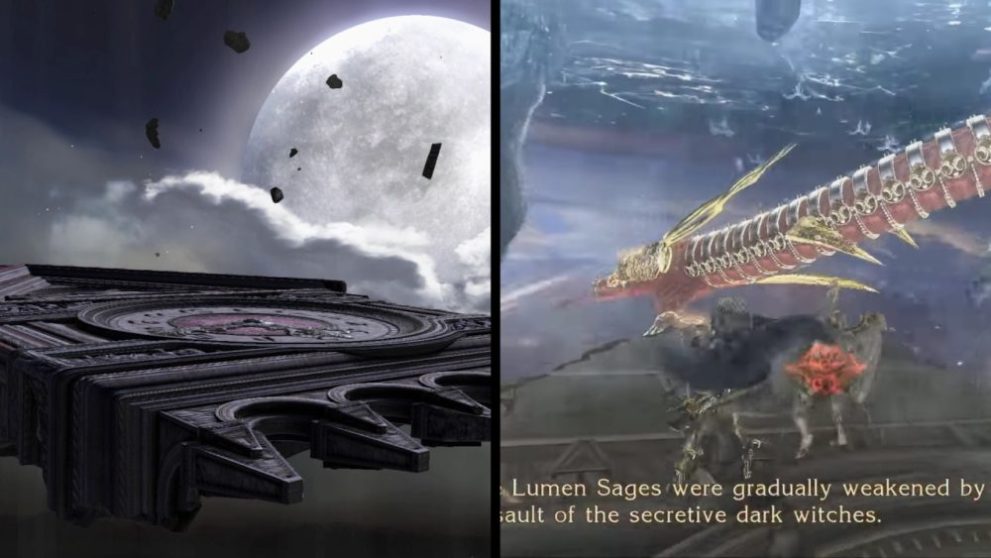
Umbra Clock Tower appears in the opening of the first Bayonetta. Much like the stage in Super Smash Bros., Bayonetta begins with the face of the Umbra Clock Tower falling while Bayonetta and Jeanne use it as a platform to fight angels.
New Donk City Hall – Super Mario Odyssey (Switch, 2017)
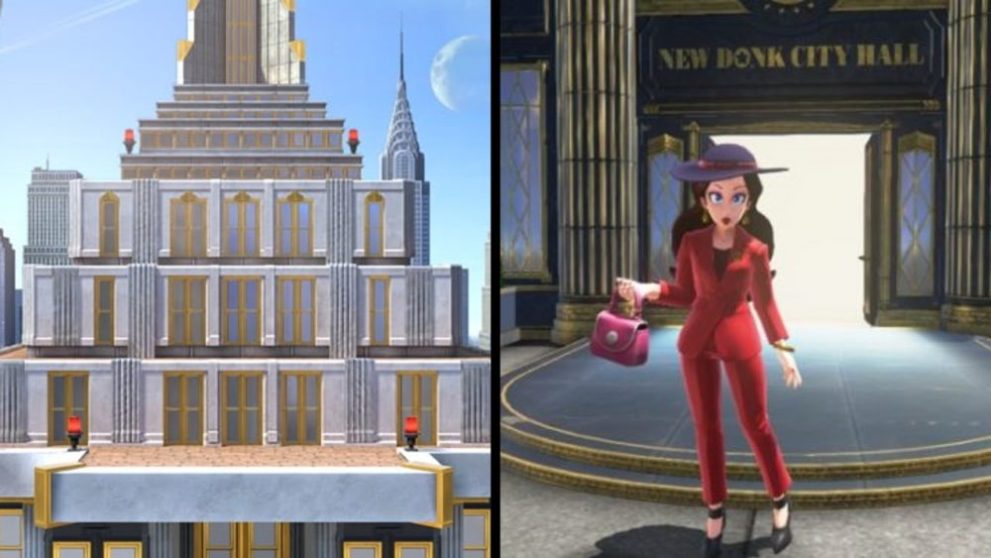
The Metro Kingdom, home to New Donk City, is the eighth kingdom from Super Mario Odyssey. Mayor Pauline stands outside the City Hall as Mario and Cappy gather the rest of her band members to put on a festival.
Great Plateau Tower – The Legend of Zelda: Breath of the Wild (Wii U & Switch, 2017)
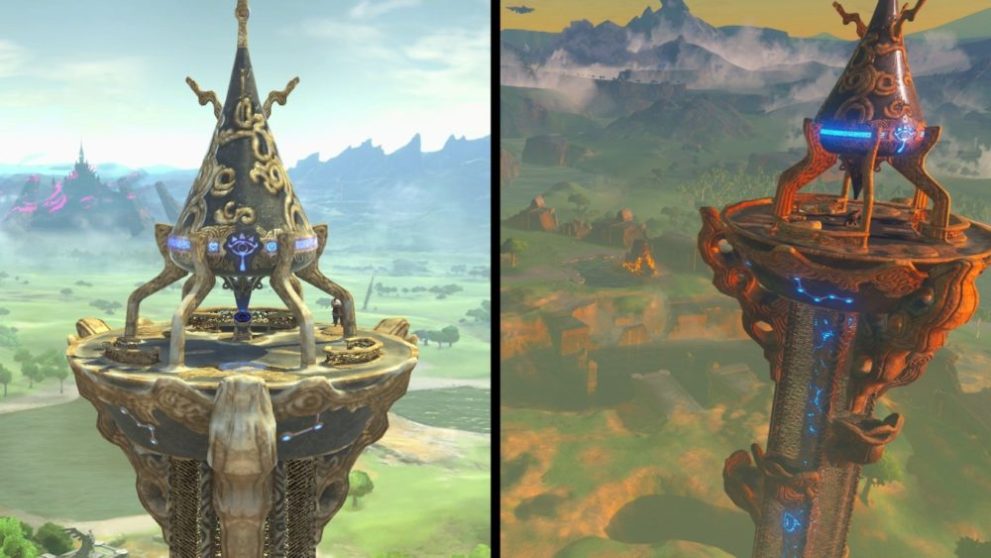
The Great Plateau Tower is the first Sheikah Tower that Link scales in The Legend of Zelda: Breath of the Wild. This begins Link’s journey to conquer the trials of the world’s Ancient Shrines and defeat Calamity Ganon.
Moray Towers – Splatoon (Wii U, 2015)
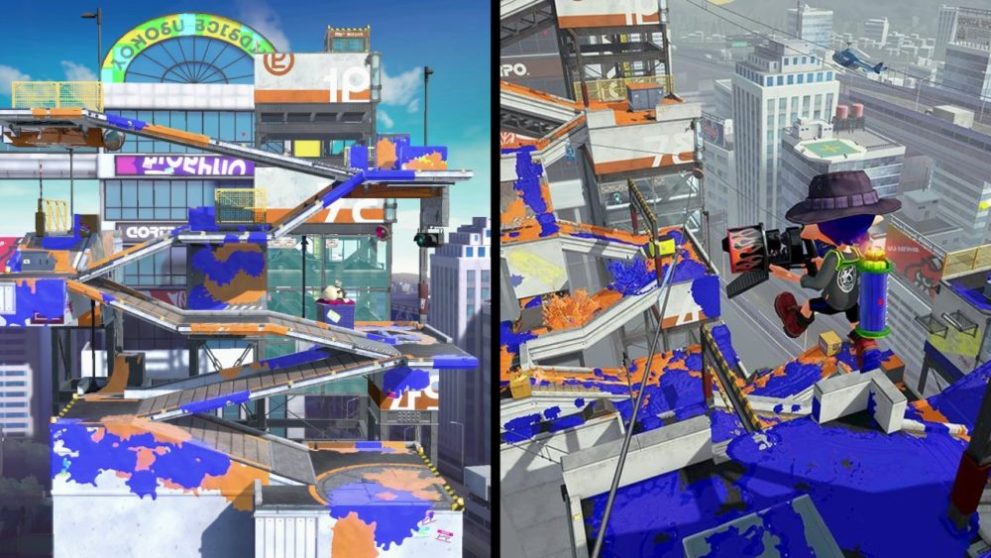
Moray Towers is a multiplayer stage that was added into the original Splatoon on July 11, 2015. It consists of two large zig-zagging towers with each team’s spawn points being at the top of each tower. Most of the inking takes place in the center of the stage unless a team is good enough that they can push the enemy team back up their own tower.
Dracula’s Castle – Castlevania (NES, 1986)
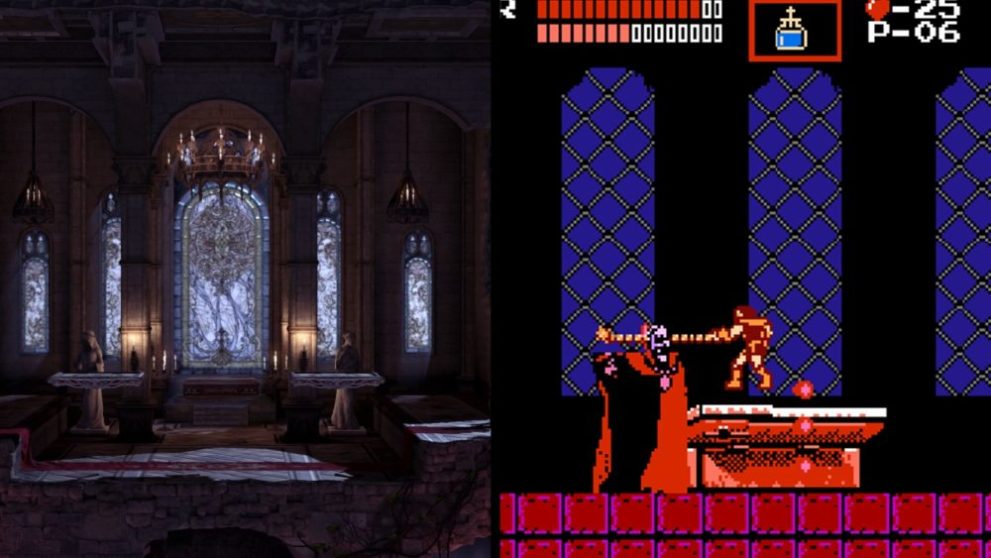
Dracula’s Castle is the setting of many final showdowns in the Castlevania series. In the first game, Simon Belmont had to progress through the tower, defeating Dracula’s minions to have a chance at clashing with the Count himself.

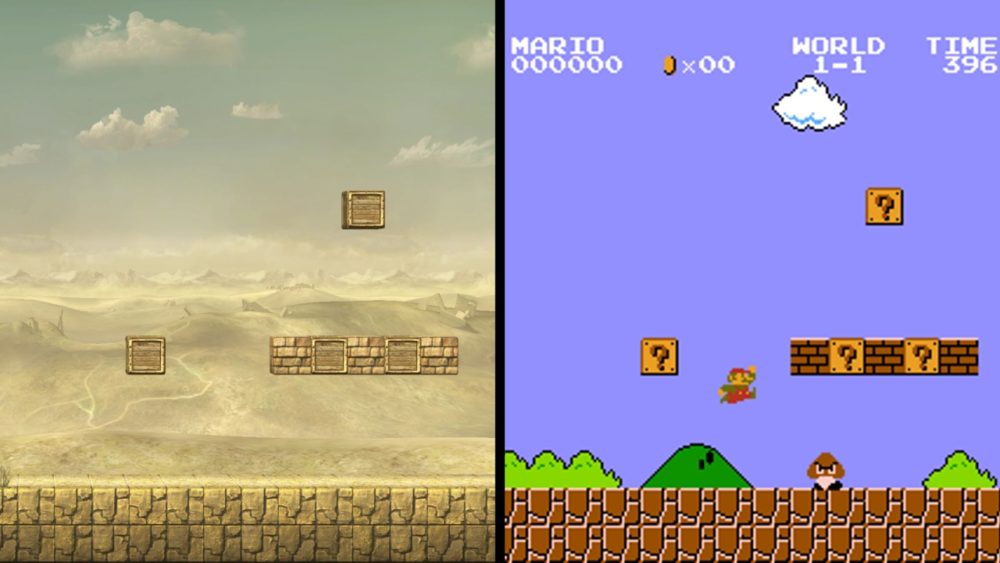
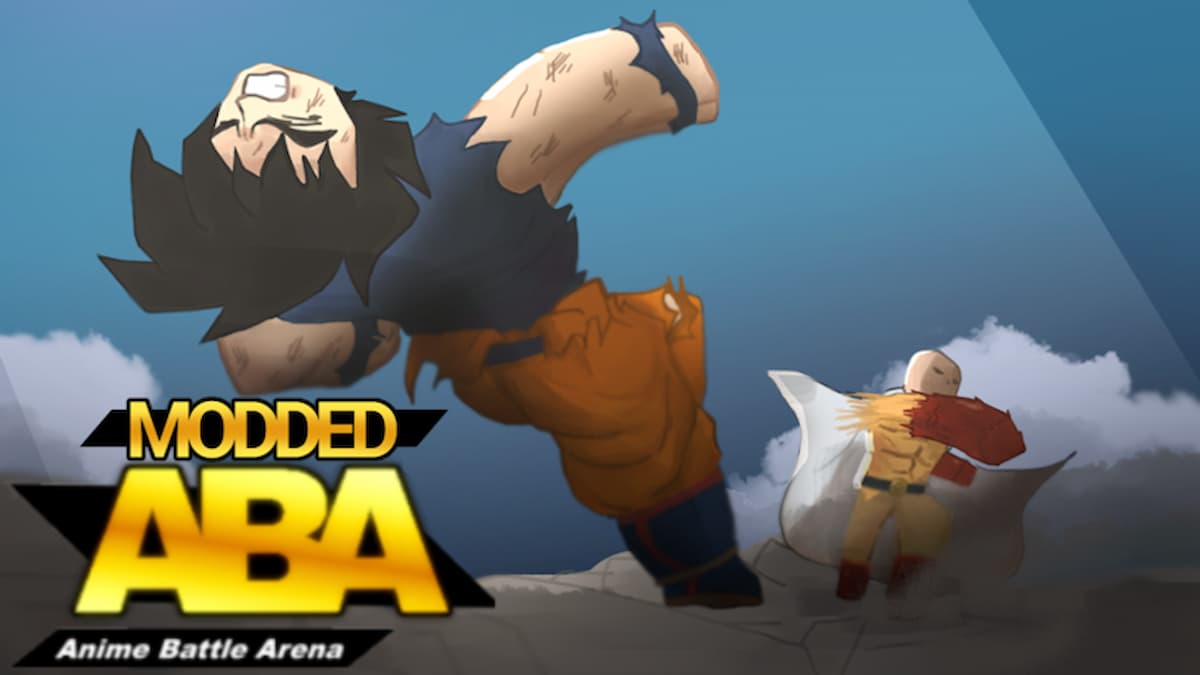

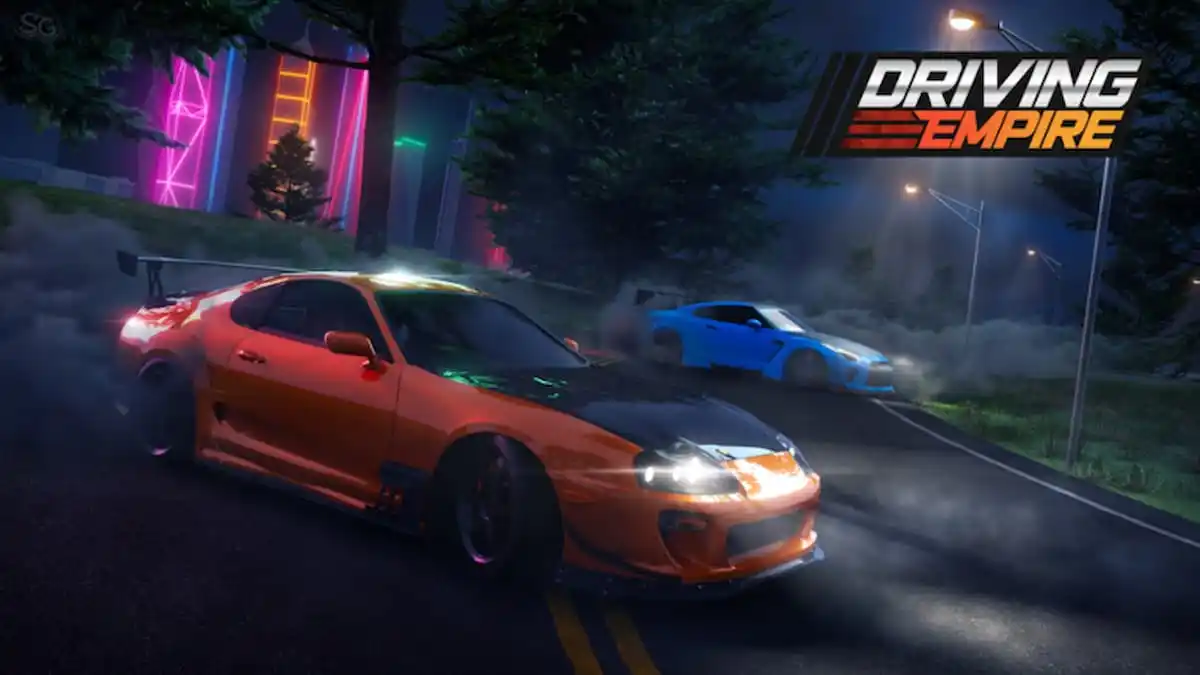
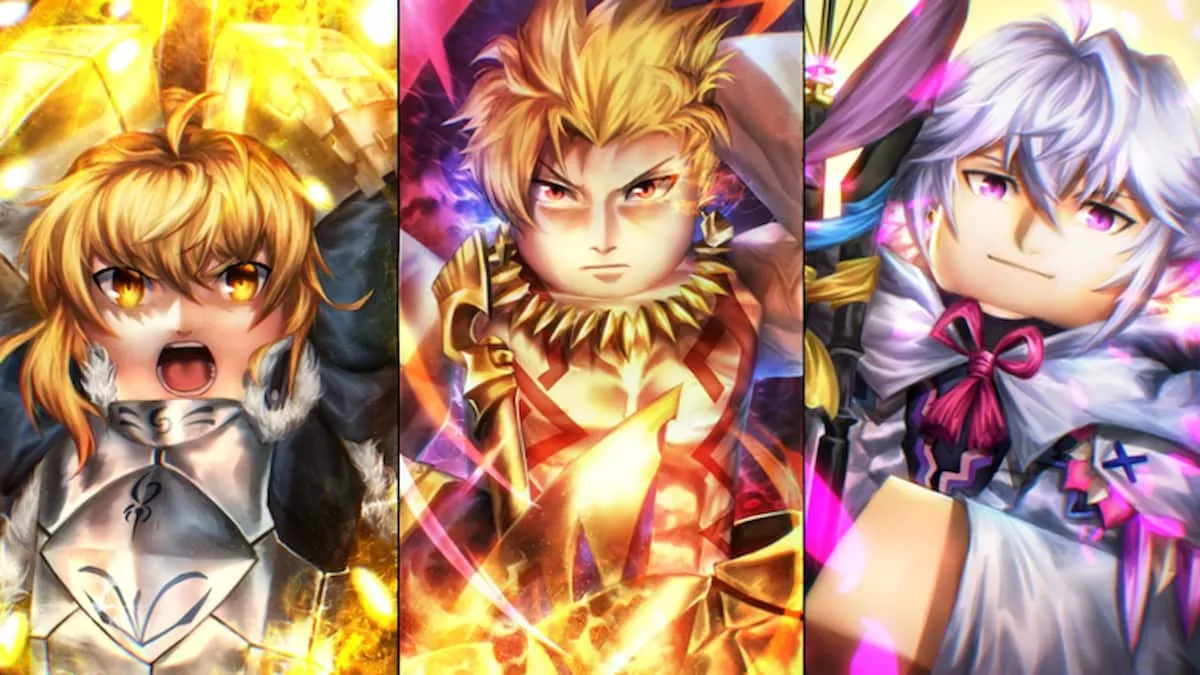
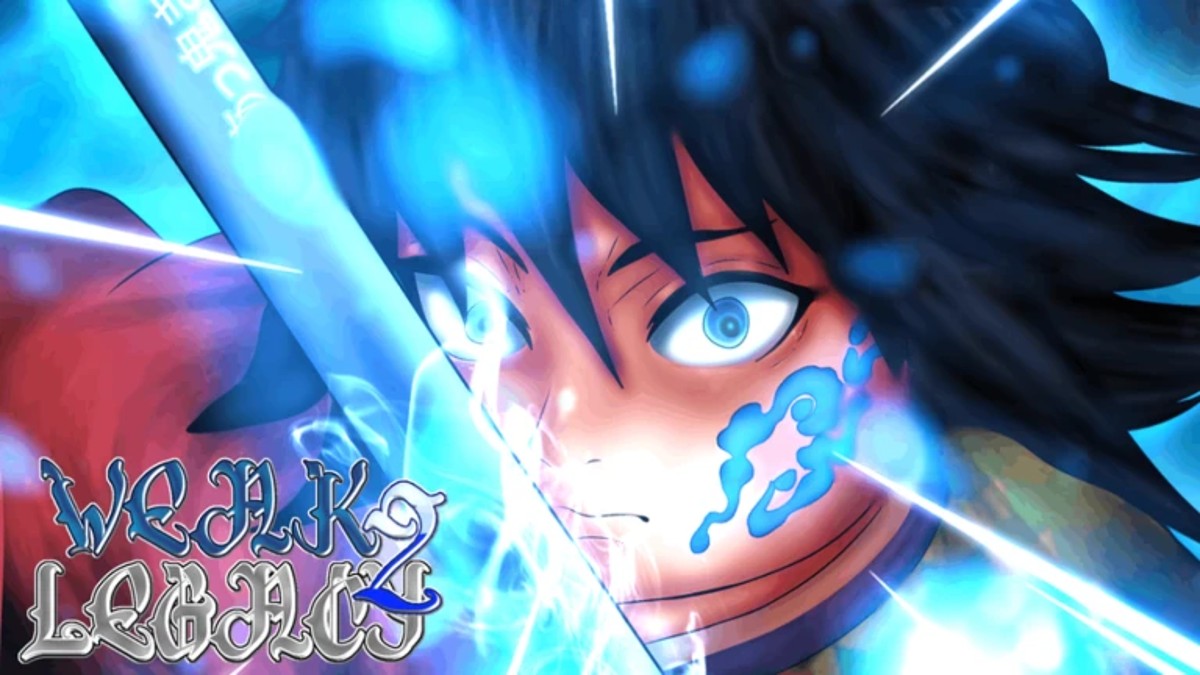
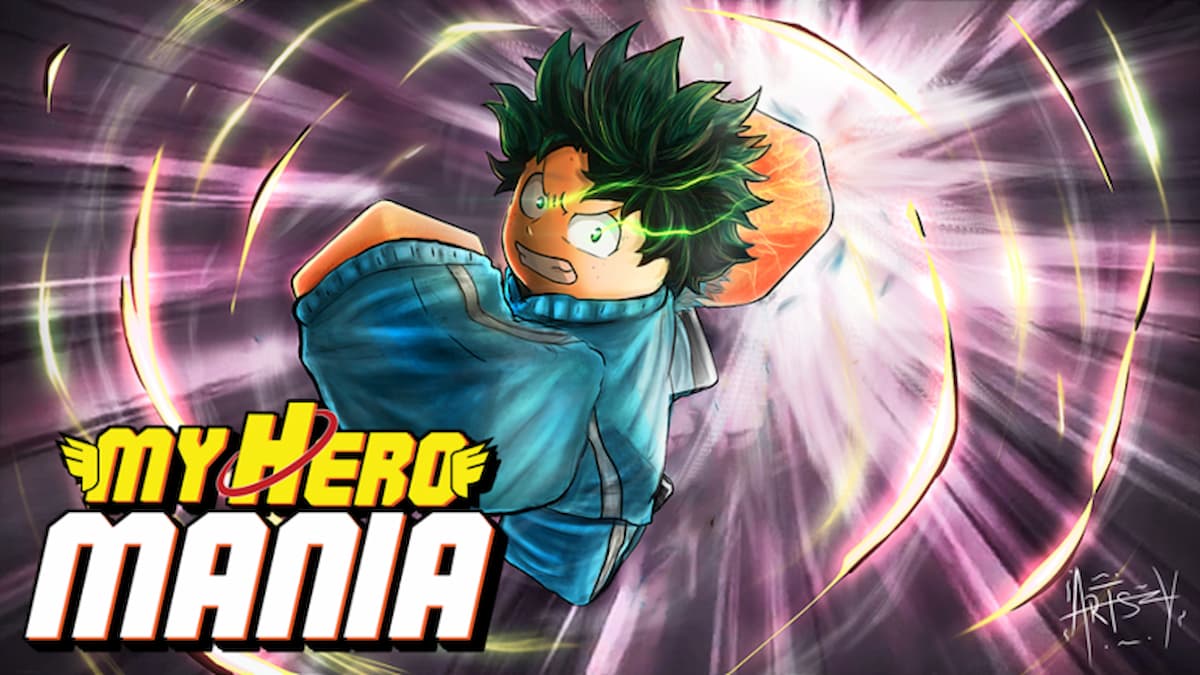
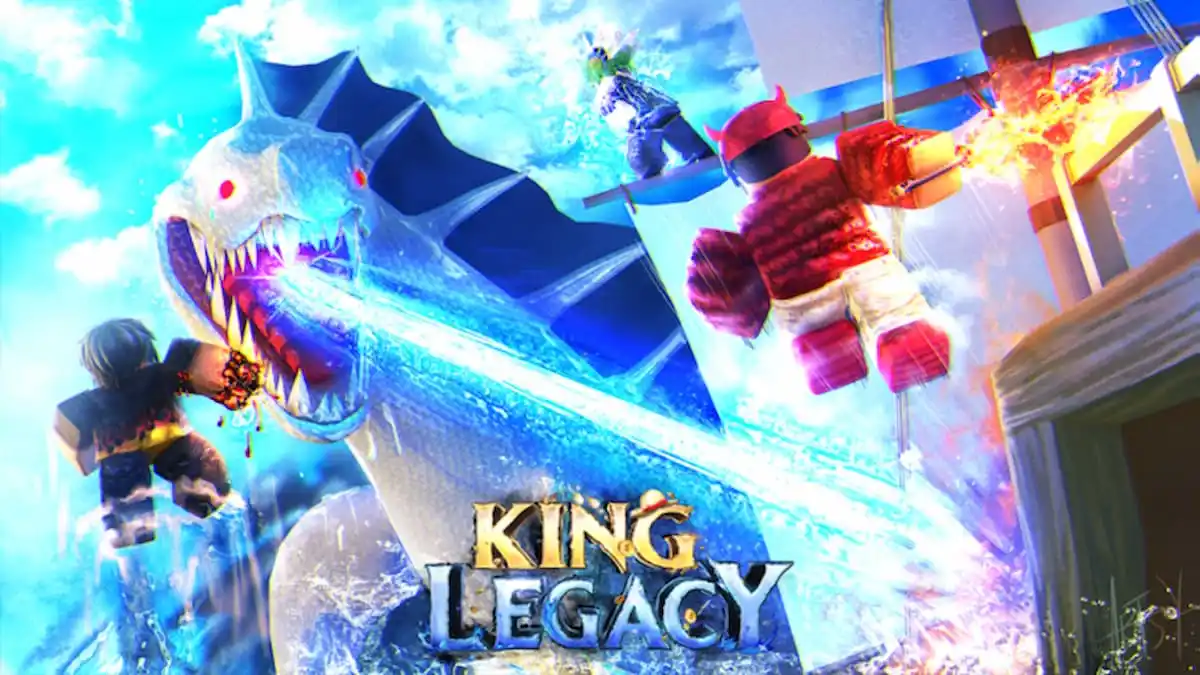


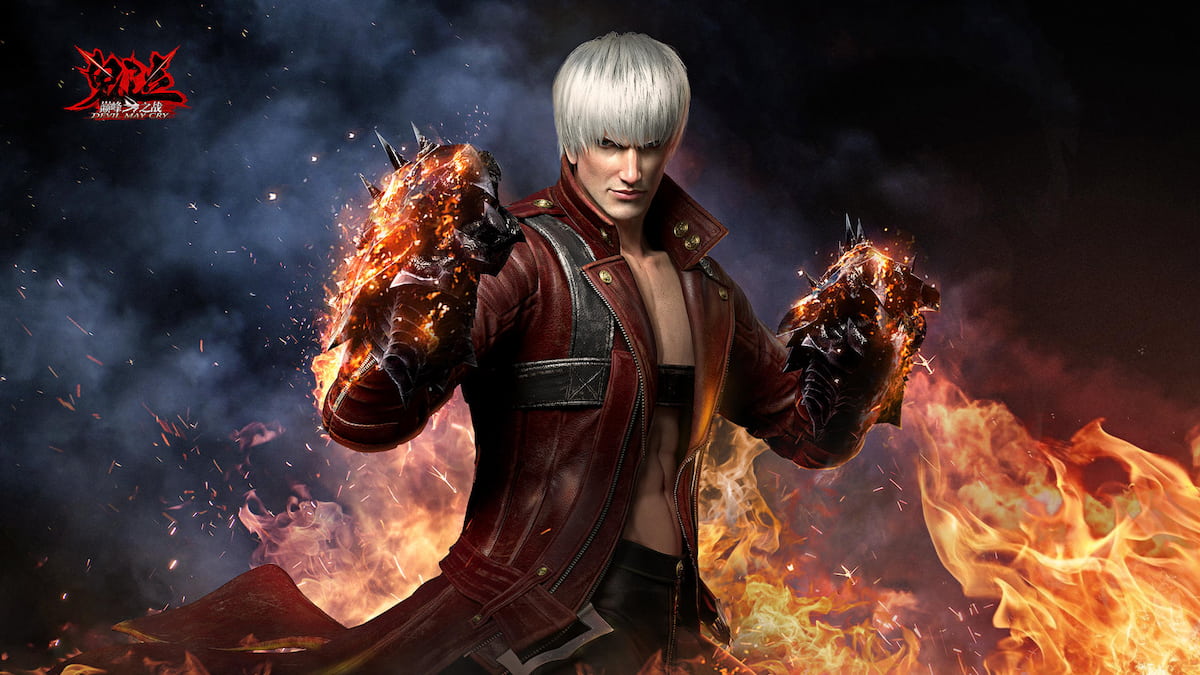

Updated: Aug 30, 2018 10:23 am